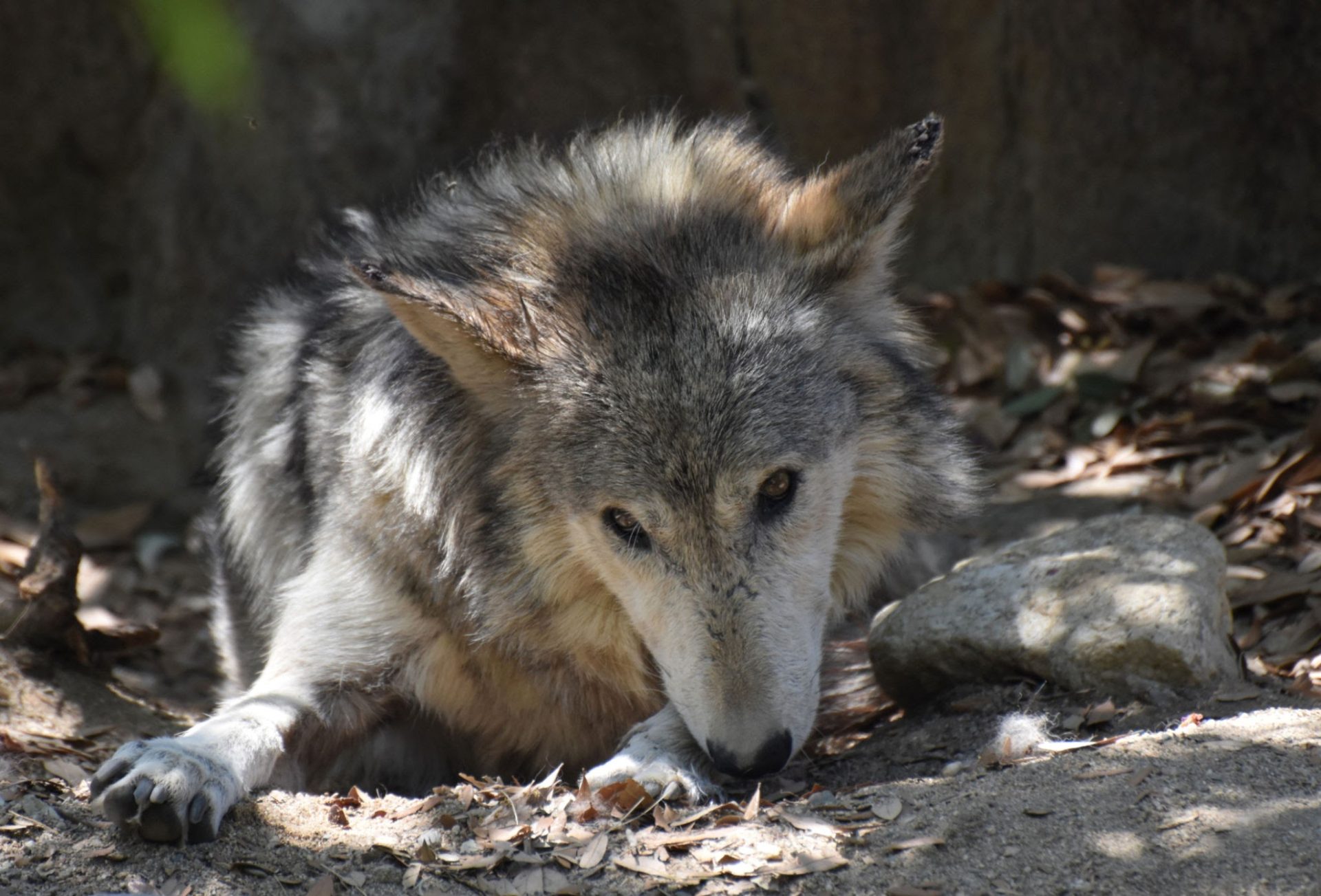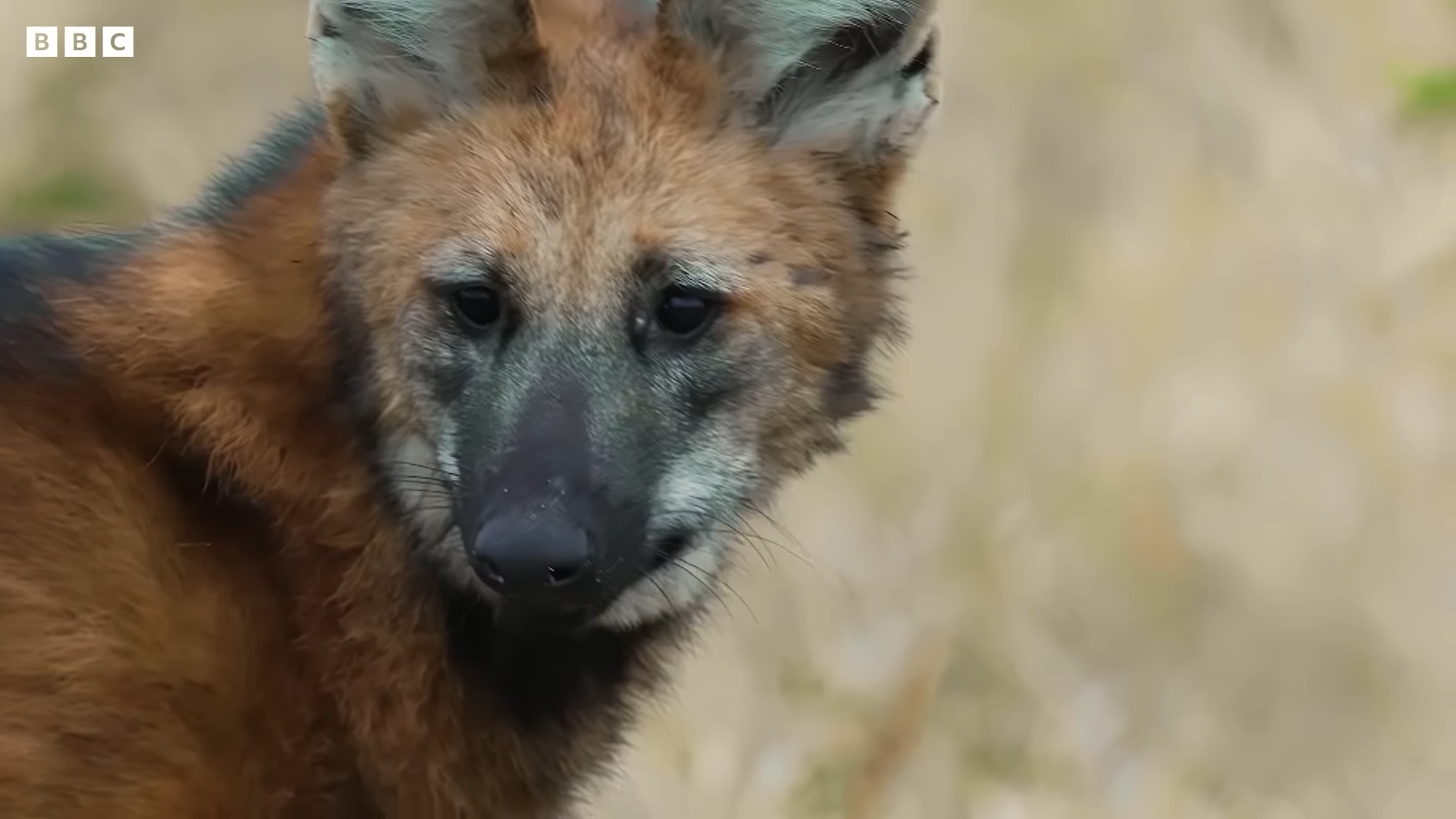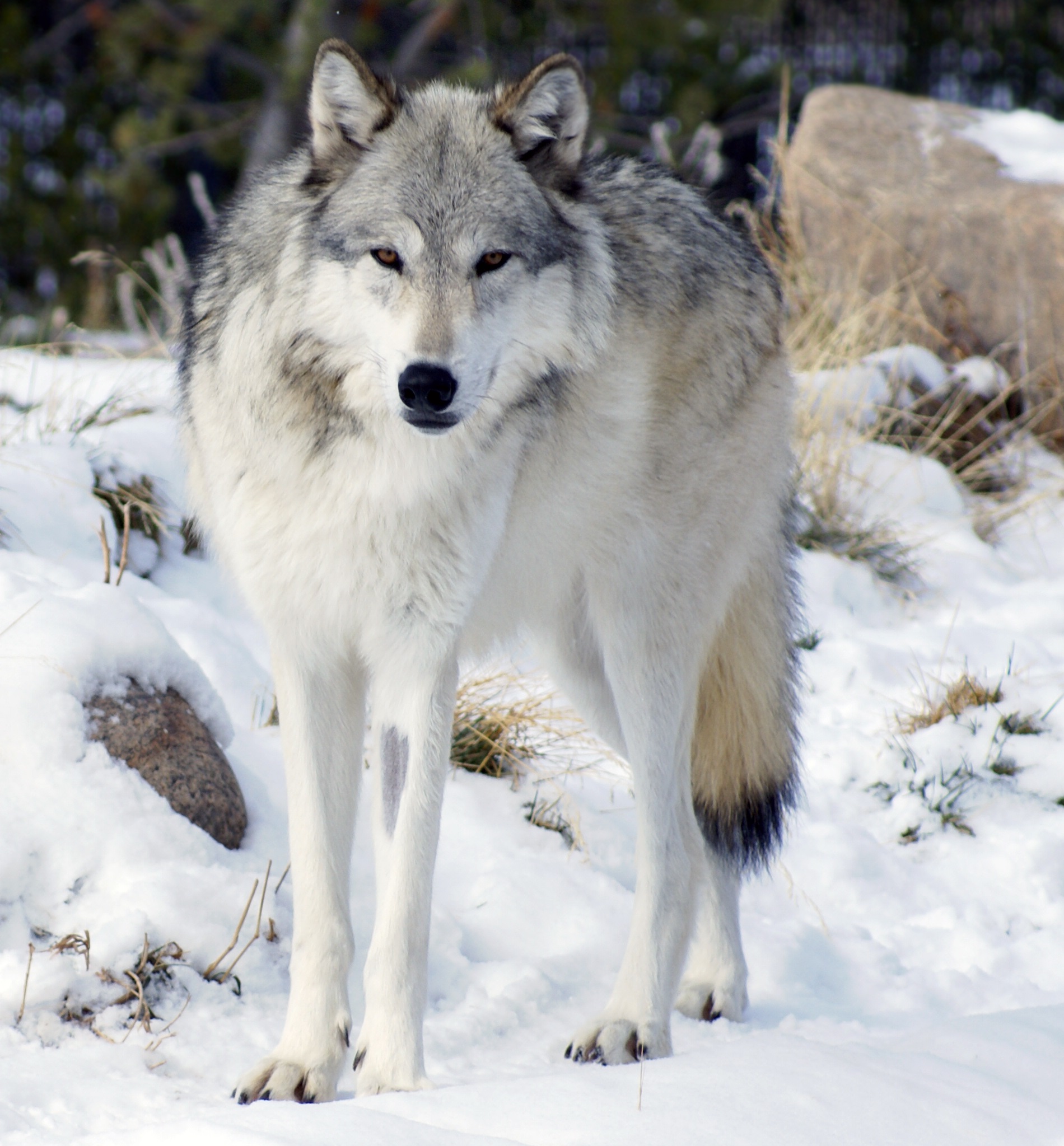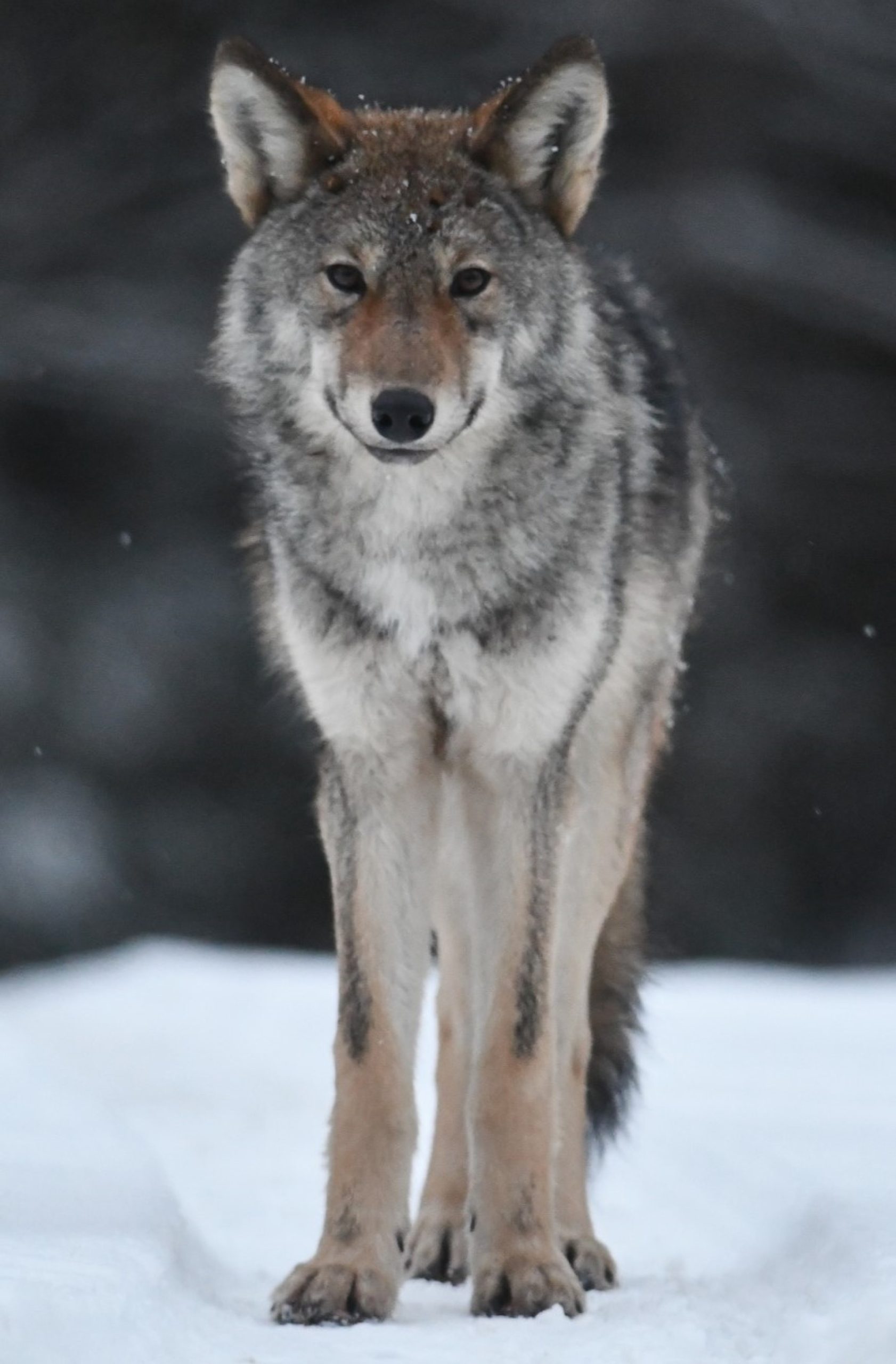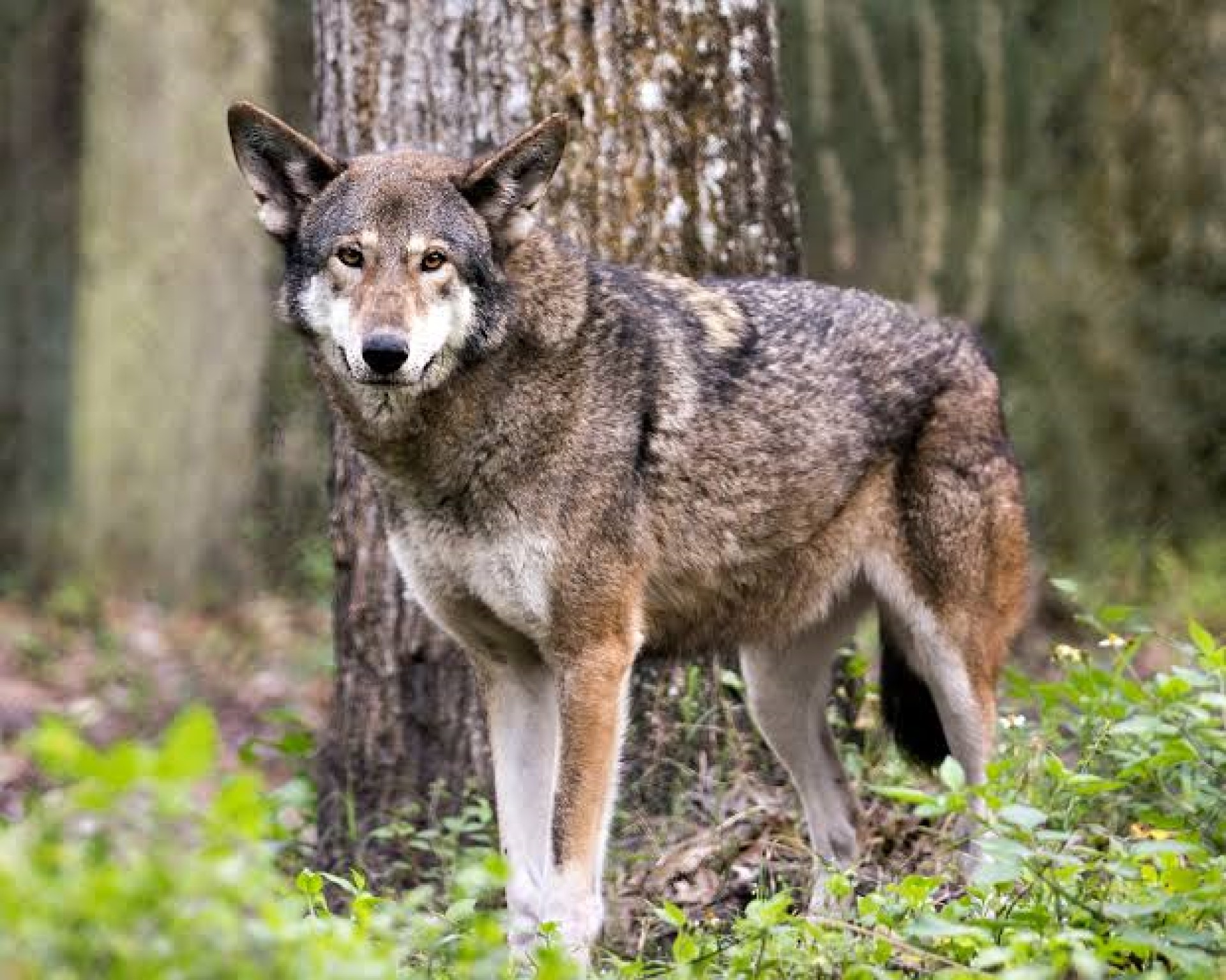2. Reduncinae - Rhebok, Reedbuck, Waterbuck
Boher Reedbuck
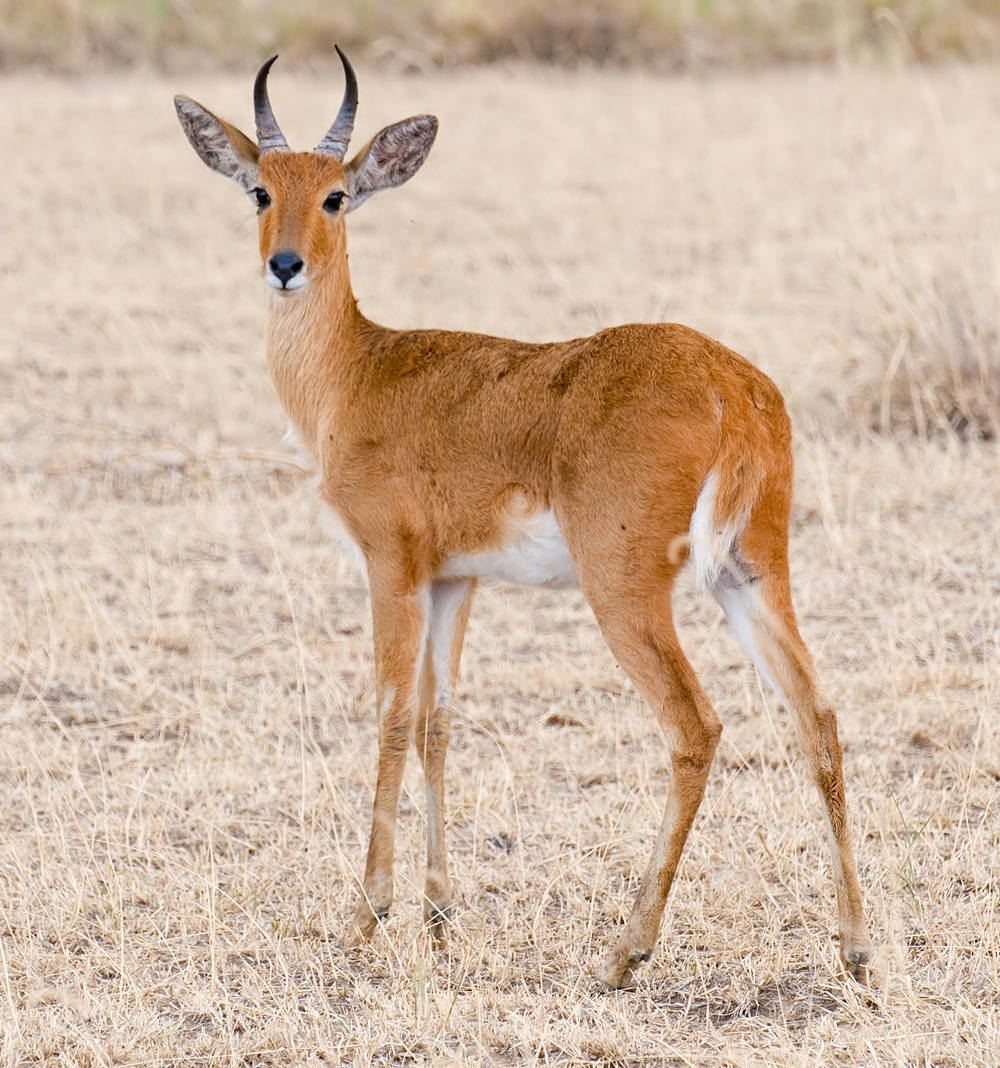
The bohor reedbuck is an antelope native to central Africa.
The head-and-body length of this medium-sized antelope is typically between 100–135 cm. Females are smaller. This sturdily built antelope has a yellow to grayish brown coat. Only the males possess horns which measure about 25–35 cm long. There are 5 subspecies:
- R. r. bohor Rüppell, 1842: Also known as the Abyssinian bohor reedbuck. It occurs in southwestern, western and central Ethiopia, and Blue Nile (Sudan).
- R. r. cottoni (W. Rothschild, 1902): It occurs in the Sudds (Southern Sudan), northeastern Democratic Republic of the Congo, and probably in northern Uganda.
- R. r. nigeriensis (Blaine, 1913): This subspecies occurs in Nigeria, northern Cameroon, southern Chad and Central African Republic.
- R. r. redunca (Pallas, 1767): Its range extends from Senegal east to Togo. It inhabits the northern savannas of Africa.
- R. r. wardi (Thomas, 1900): Found in Uganda, eastern Democratic Republic of the Congo and eastern Africa.
Mountain Reedbuck
The mountain reedbuck has 3 subspecies.  The western mountain reedbuck only has 450 individuals still living wild, (shown on the map in red) also known as the Adamwa mountain reedbuck which is restricted to the highlands of Cameroon. The Eastern mountain reedbuck (or Chanlers) has 2900 wild individuals, is found in parts of Kenya and Ethiopia. The Southern moutnain reedbuck, blue, (33,000) is found in the Drakensburg mountains of South Africa.
The western mountain reedbuck only has 450 individuals still living wild, (shown on the map in red) also known as the Adamwa mountain reedbuck which is restricted to the highlands of Cameroon. The Eastern mountain reedbuck (or Chanlers) has 2900 wild individuals, is found in parts of Kenya and Ethiopia. The Southern moutnain reedbuck, blue, (33,000) is found in the Drakensburg mountains of South Africa.
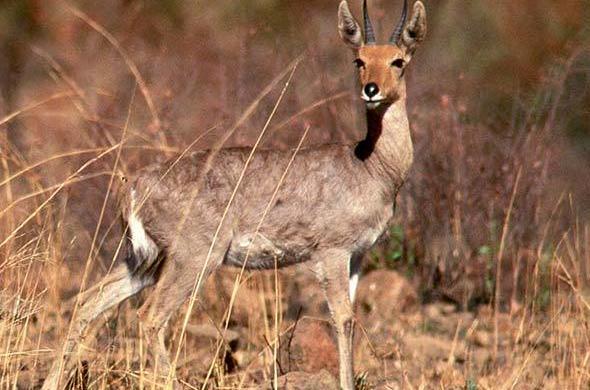
Southern Reedbuck
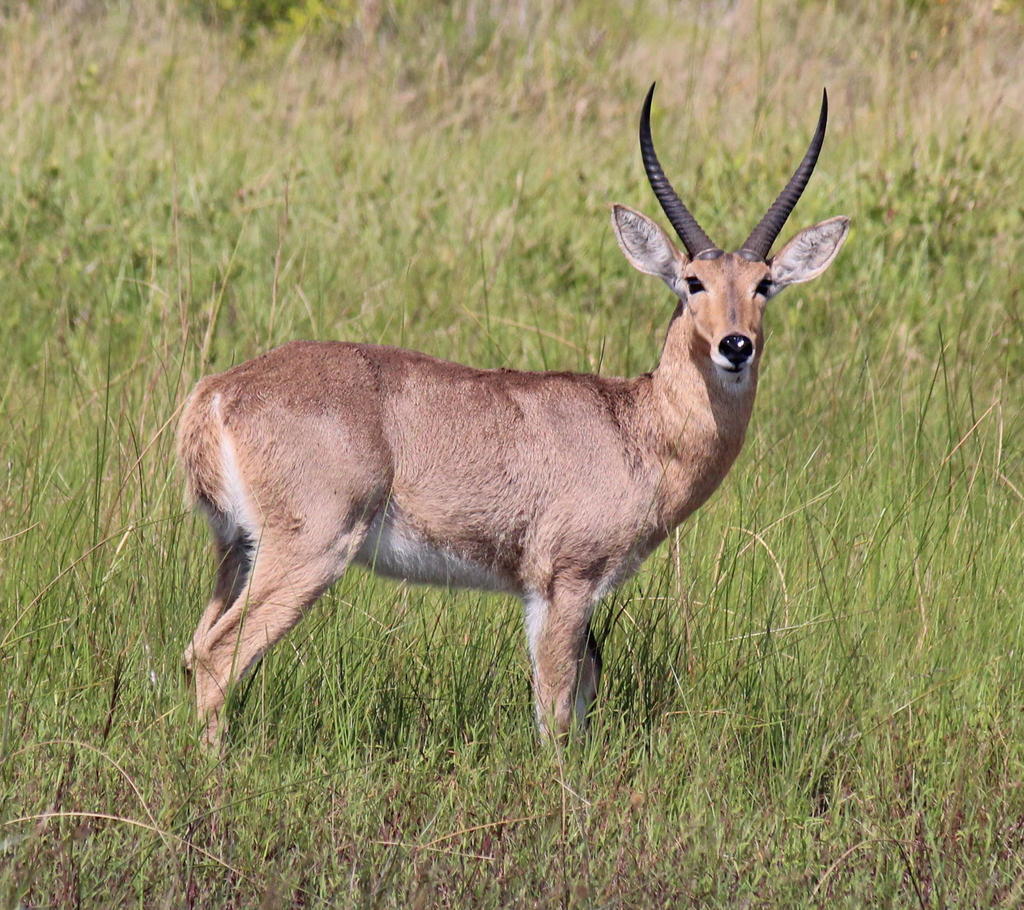
The Southern, or common  Reedbuck is found in Southern Africa. It is a midsized antelope, standing 134-167cm tall
Reedbuck is found in Southern Africa. It is a midsized antelope, standing 134-167cm tall
It was described in 1785 by Pieter Boddaert. Southern reedbucks live in pairs or alone, though occasionally they will form herds of up to 20. They prefer to lie in grass or reed beds in the heat of the day and feed during sunrise and sunset, or sometimes even at night. Old reedbucks are permanently territorial, with territories around 35-60 hectares, and generally live with a single female, preventing contact with rival males. Females and young males perform an ‘appeasement dance’ for older males. Within this territory, it is active all the time in summer, but it is nocturnal in the wet season. It regularly uses paths to reach good sites to rest, graze, and drink water. They are hunted by all the top predators in the area, including Lion, Leopard, Cheetah hyena and wild dog, as well as animals like snakes.
They are easily hunted, and combined with loss of territory to human expansion, the population is down. About 60% occur in protected reserves, but in some countries like Gabon and the DRC are though to almost be locally extinct.
Kob
Red Lechwe antelope are found in a band across Africa, including areas of Eastern, Central and Western Africa.
are found in a band across Africa, including areas of Eastern, Central and Western Africa.
There are 3 subspecies:
- The western kob, is found in the west
- The Ugandan Kob is found in sub-Saharan Africa in South Sudan, Uganda and the Democratic Republic of the Congo.
- The white eared Kob is found in Western Ethiopia and South Sudan (this is one of the main animals in the huge migration within sudan)
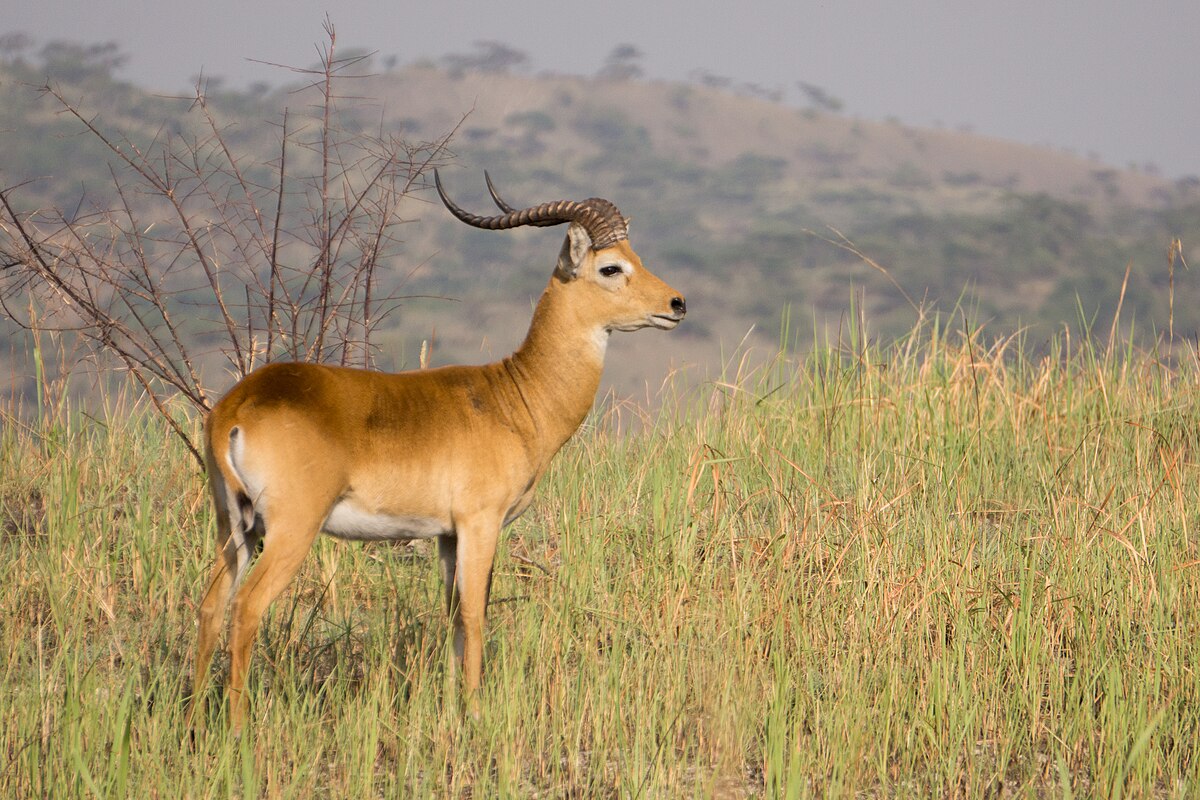
Red Lechwe
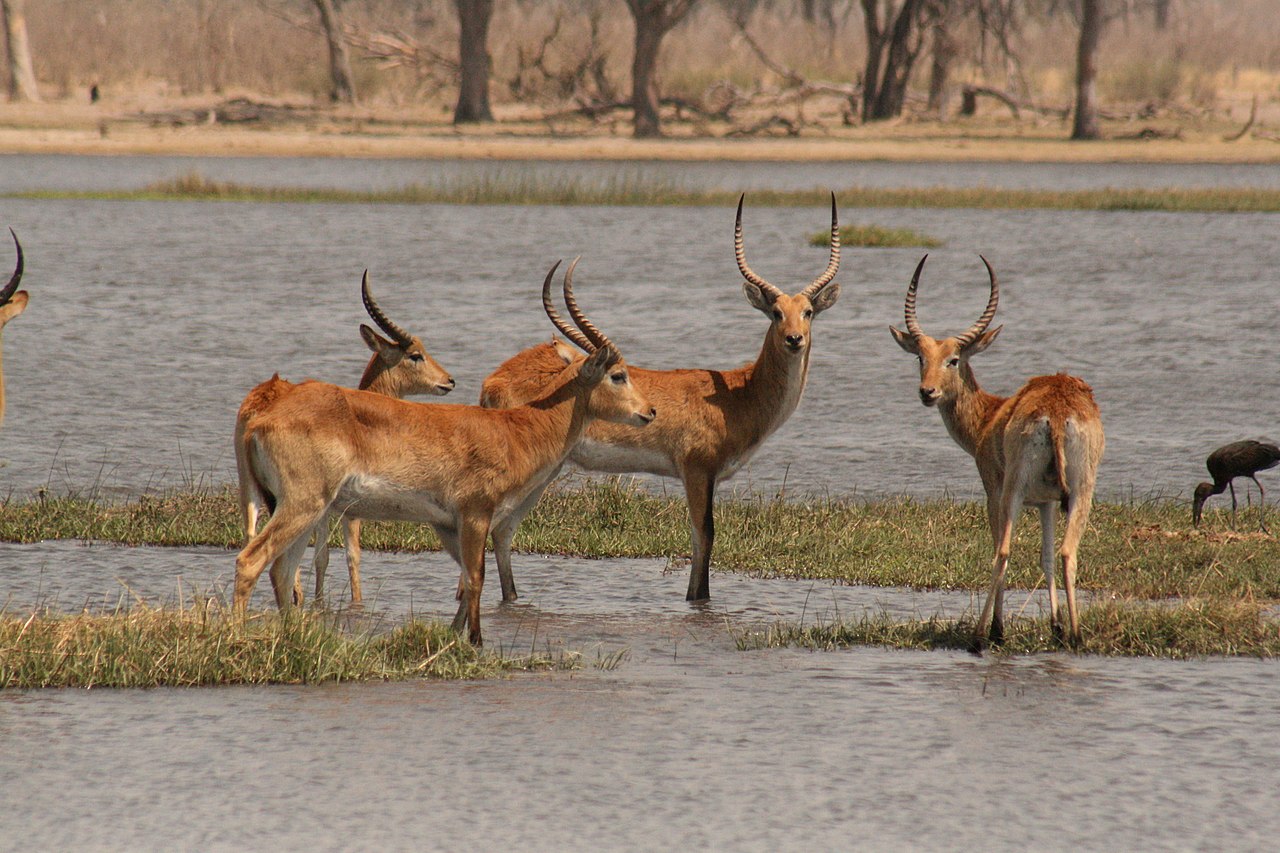
Red Lechewe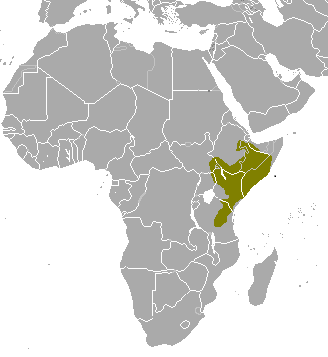 is a species of antelope found in the south of eastern African. The red lechwe is native to Botswana, Zambia, southeastern Democratic Republic of the Congo, northeastern Namibia, and eastern Angola, especially in the Okavango Delta, Kafue Flats, and Bangweulu Wetlands. They are found in shallow water, and have a substance on their legs which allows them to run pretty fast. Total population is around 160,000
is a species of antelope found in the south of eastern African. The red lechwe is native to Botswana, Zambia, southeastern Democratic Republic of the Congo, northeastern Namibia, and eastern Angola, especially in the Okavango Delta, Kafue Flats, and Bangweulu Wetlands. They are found in shallow water, and have a substance on their legs which allows them to run pretty fast. Total population is around 160,000
Four subspecies of the lechwe have been recognized
- Common red lechwe (Gray, 1850) – Widely distributed in the wetlands of Zimbabwe, Botswana, Namibia and Zambia. (80,000)
- Kafue Flats lechwe (Haltenorth, 1963) – It is confined within the Kafue Flats (seasonally inundated flood-plain on the Kafue River, Zambia). (28,000)
- † Roberts’ lechwe (Rothschild, 1907) – Formerly found in northeastern Zambia, now extinct. Also called the Kawambwa lechwe.
- Black lechwe (Kobus leche smithemani) (Lydekker, 1900) – Found in the Bangweulu region of Zambia. (50,000)
In addition, the Upemba lechwe (1000) and the extinct Cape lechwe are also considered subspecies by some authorities. Although related and sharing the name “lechwe”, the Nile lechwe (below) is consistently recognized as a separate species.
Nile Lechwe
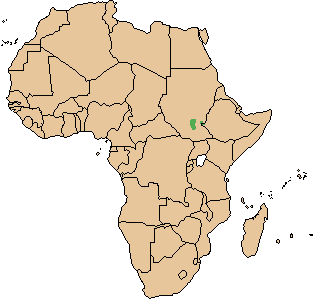 The Nile lechwe or Mrs Gray’s lechwe is an endangered species of antelope found in swamps and grasslands in South Sudan and Ethiopia.
The Nile lechwe or Mrs Gray’s lechwe is an endangered species of antelope found in swamps and grasslands in South Sudan and Ethiopia.
Nile lechwe can visually signal and vocalize to communicate with each other. They rear high in the air in front of their opponents and turn their heads to the side while displaying. Females are quite loud, making a toad-like croaking when moving. Known predators are humans, lions, crocodiles, cheetahs, wild dogs, hyenas and leopards. They flee to water if disturbed, but females defend their offspring from smaller predators by direct attack, mainly kicking. Nile lechwe are crepuscular, active in the early morning and late afternoon. They gather in herds of up to 50 females and one male or in smaller all-male herds. They divide themselves into three social groups: females and their new offspring, bachelor males, and mature males with territories. A males with territory sometimes allows a bachelor male into his territory to guard the region and not to copulate. They are sexually mature at 2.
Nile lechwe feed on succulent grasses and water plants. They have the special capability to wade in shallow waters and swim in deeper waters, and may feed on young leaves from trees and bushes, rearing up to reach this green vegetation. Nile lechwe are also found in marshy areas, where they eat aquatic plants. Around 32,000 and are classed as endangered
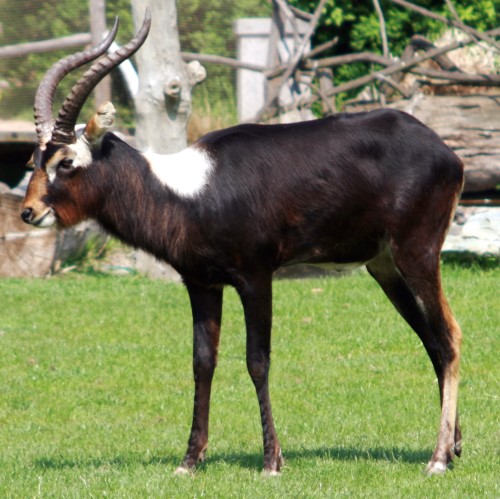
Puku
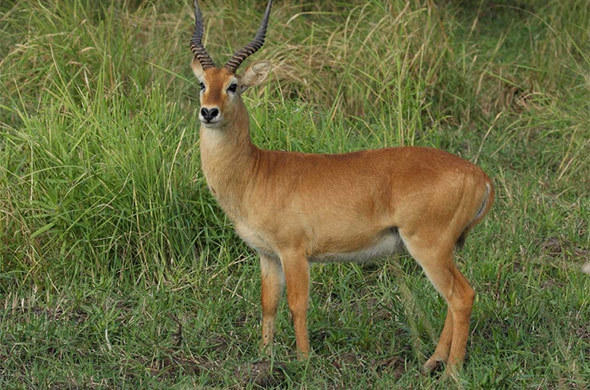
The Nyala is a spiral horned species
found in Southern Africa. The nyala is mainly active in the early morning and the late afternoon. It generally browses during the day if temperatures are 20–30 °C and during the night in the rainy season. The nyala feeds upon foliage, fruits and grasses, and requires sufficient fresh water. It is a very shy animal, and prefers water holes to the river bank. Not territorial, they are very cautious creatures. They live in single-sex or mixed family groups of up to 10 individuals, but old males live alone. They inhabit thickets within dense and dry savanna woodlands. The main predators of the nyala are lion, leopard and African wild dog, while baboons and raptorial birds prey on juveniles. Males and females are sexually mature at 18 and 11–12 months of age respectively, though they are socially immature until five years old. They have one calf after 7 months of gestation. Its population is stable, with the greatest threat coming from habitat loss as humans expand. There are thought to be 36500 and the population is stable.
Waterbuck
The waterbuck  is a large antelope found widely in sub-Saharan Africa.It was first described by Irish naturalist William Ogilby in 1833.
is a large antelope found widely in sub-Saharan Africa.It was first described by Irish naturalist William Ogilby in 1833.
Its 13 subspecies are grouped under two varieties: the common or ellipsiprymnus waterbuck and the defassa waterbuck. The head-and-body length is typically between 177 and 235cm and the typical height is between 120 and 136cm. In this antelope, males are taller and heavier than females. Males reach roughly 127 cm at the shoulder, while females reach 119cm. Males typically weigh 198–262 kg and females 161–214 kg. Their coat colour varies from brown to grey. The long, spiral horns, present only on males, curve backward, then forward, and are 55–99 cm long. Waterbucks are rather sedentary in nature. As gregarious animals, they may form herds consisting of six to 30 individuals. These groups are either nursery herds with females and their offspring or bachelor herds. Males start showing territorial behaviour from the age of 5 years, but are most dominant from the six to nine. The waterbuck cannot tolerate dehydration in hot weather, and thus inhabits areas close to sources of water. Predominantly a grazer, the waterbuck is mostly found on grassland. In equatorial regions, breeding takes place throughout the year, but births are at their peak in the rainy season. The gestational period lasts 7–8 months, followed by the birth of a single calf.
Waterbucks inhabit scrub and savanna areas along rivers, lakes, and valleys. Due to their requirement for grasslands and water, waterbucks have a sparse ecotone distribution. The IUCN lists the waterbuck as being of least concern. More specifically, the common waterbuck is listed as of least concern. while the defassa waterbuck is near threatened. The population trend for both is downwards, especially that of the defassa, with large populations being eliminated from certain habitats because of poaching and human disturbance.
The common waterbuck is listed as least concern, while the Defassa is listed as near threatened. Only 60% of this subspecies population is in protected areas, so it could get worse, if they are lost.
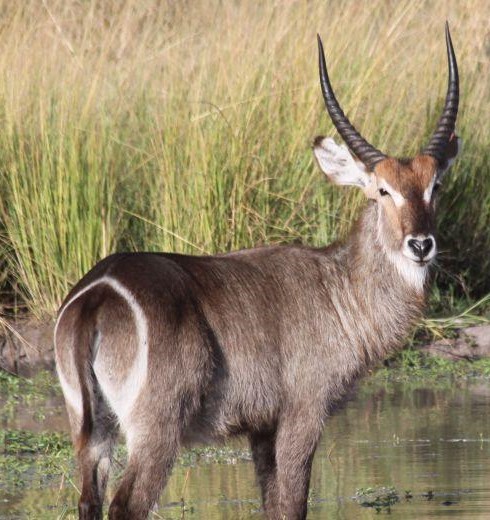

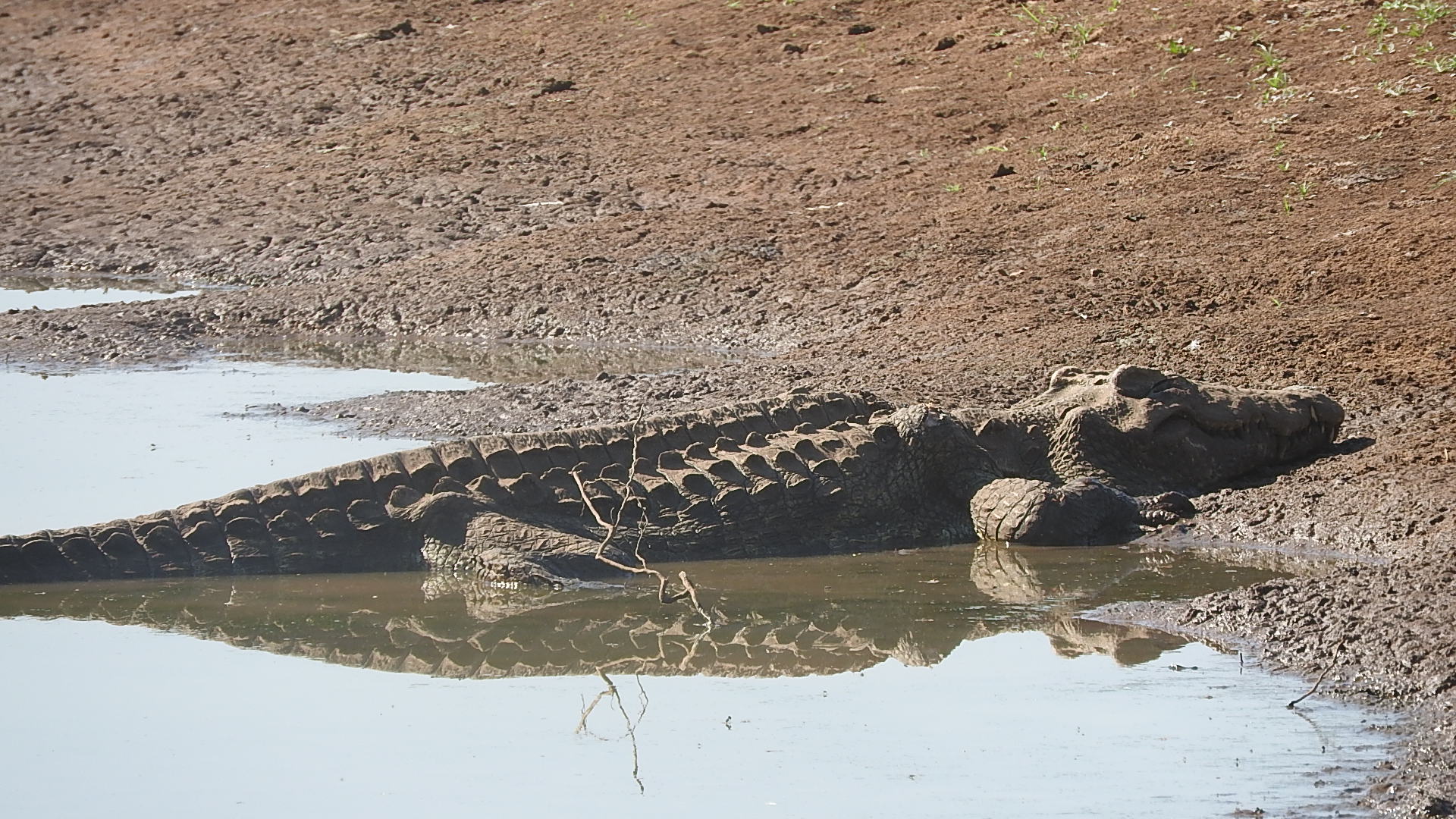
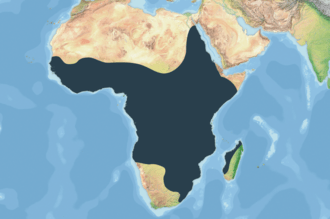
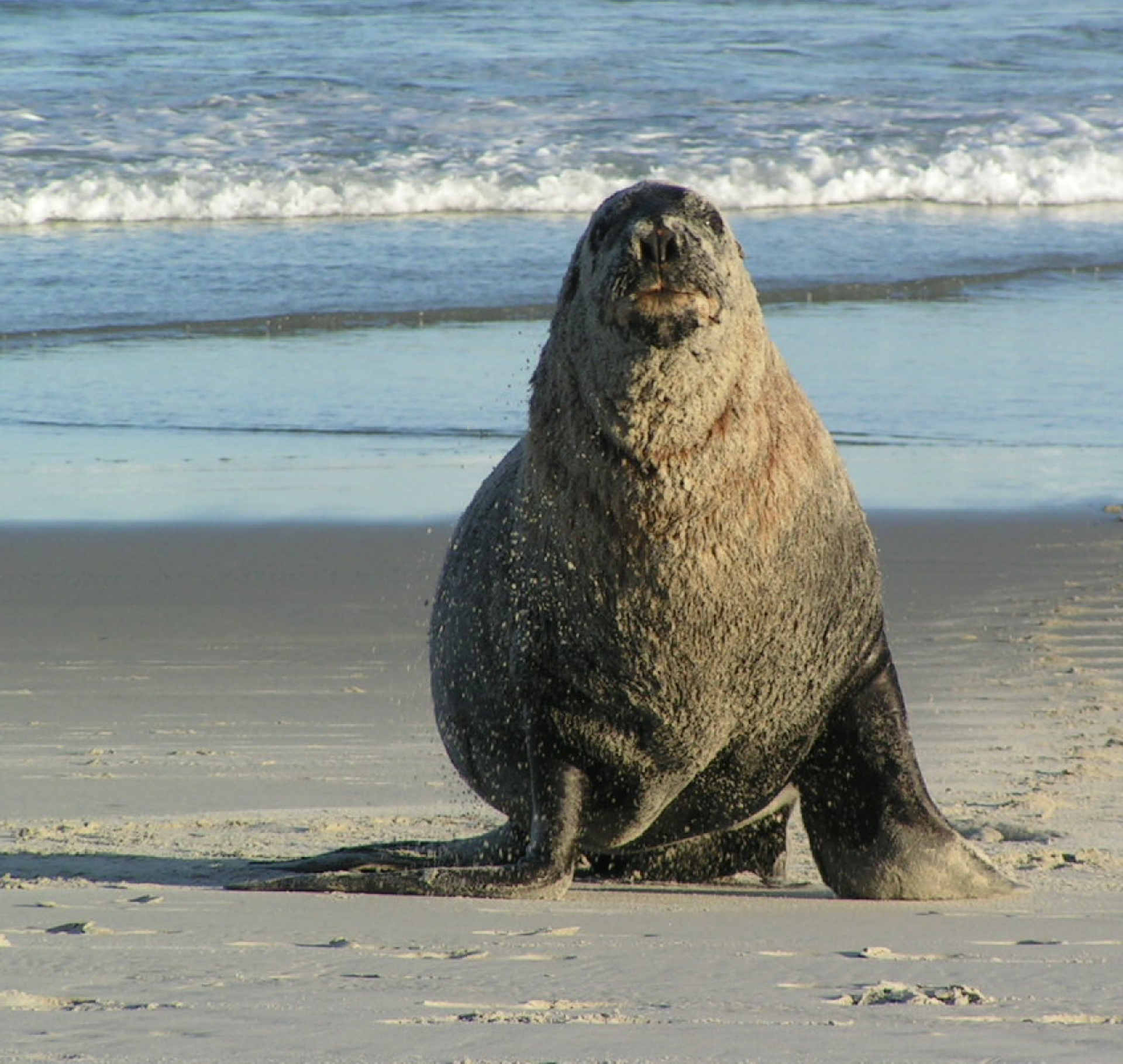

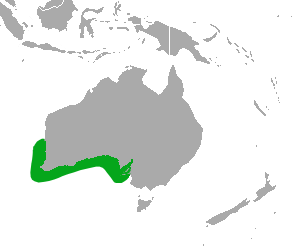 only endemic pinniped found in Australia.
only endemic pinniped found in Australia.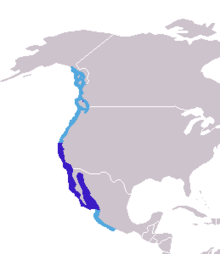 the west coast of north America. On this map, the navy blue marks the breeding rance, while the light blue shows the total range that they can be found in. It should be noted, that previously the Japanese and Galapagos sealion were both considered subspecies of the Californian species, but no longer. They can stay healthy, for a time, in fresh water, and have been seen living for a while in Bonneville dam – 150 miles inland.
the west coast of north America. On this map, the navy blue marks the breeding rance, while the light blue shows the total range that they can be found in. It should be noted, that previously the Japanese and Galapagos sealion were both considered subspecies of the Californian species, but no longer. They can stay healthy, for a time, in fresh water, and have been seen living for a while in Bonneville dam – 150 miles inland.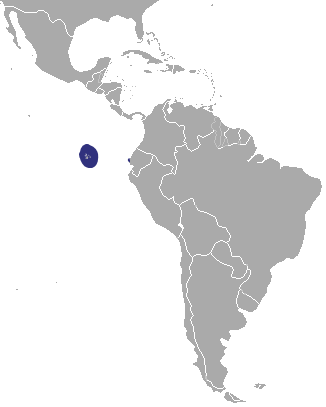 on all of the Galapagos Islands, as well as (in smaller numbers) on Isla de la Plata, which is just 40km from Puerto López a village in Ecuador. There have also been recorded sightings on the Isla del Coco which is 500km southwest of Costa Rica (and 750km from the Galapagos). These are not regular, and so have been considered vagrant. It is of course possible that historically they roamed here, but we cannot say.
on all of the Galapagos Islands, as well as (in smaller numbers) on Isla de la Plata, which is just 40km from Puerto López a village in Ecuador. There have also been recorded sightings on the Isla del Coco which is 500km southwest of Costa Rica (and 750km from the Galapagos). These are not regular, and so have been considered vagrant. It is of course possible that historically they roamed here, but we cannot say. known as the Hooker sealion) is native to south island, though before 1500 it is thought that it was also found on north island. They tend to breed on Subarctic islands of Auckland and Campbell (99% of the pups are born in these islands). In 1993, sealions started breeding on South Island again for the first time in 150 years.
known as the Hooker sealion) is native to south island, though before 1500 it is thought that it was also found on north island. They tend to breed on Subarctic islands of Auckland and Campbell (99% of the pups are born in these islands). In 1993, sealions started breeding on South Island again for the first time in 150 years.





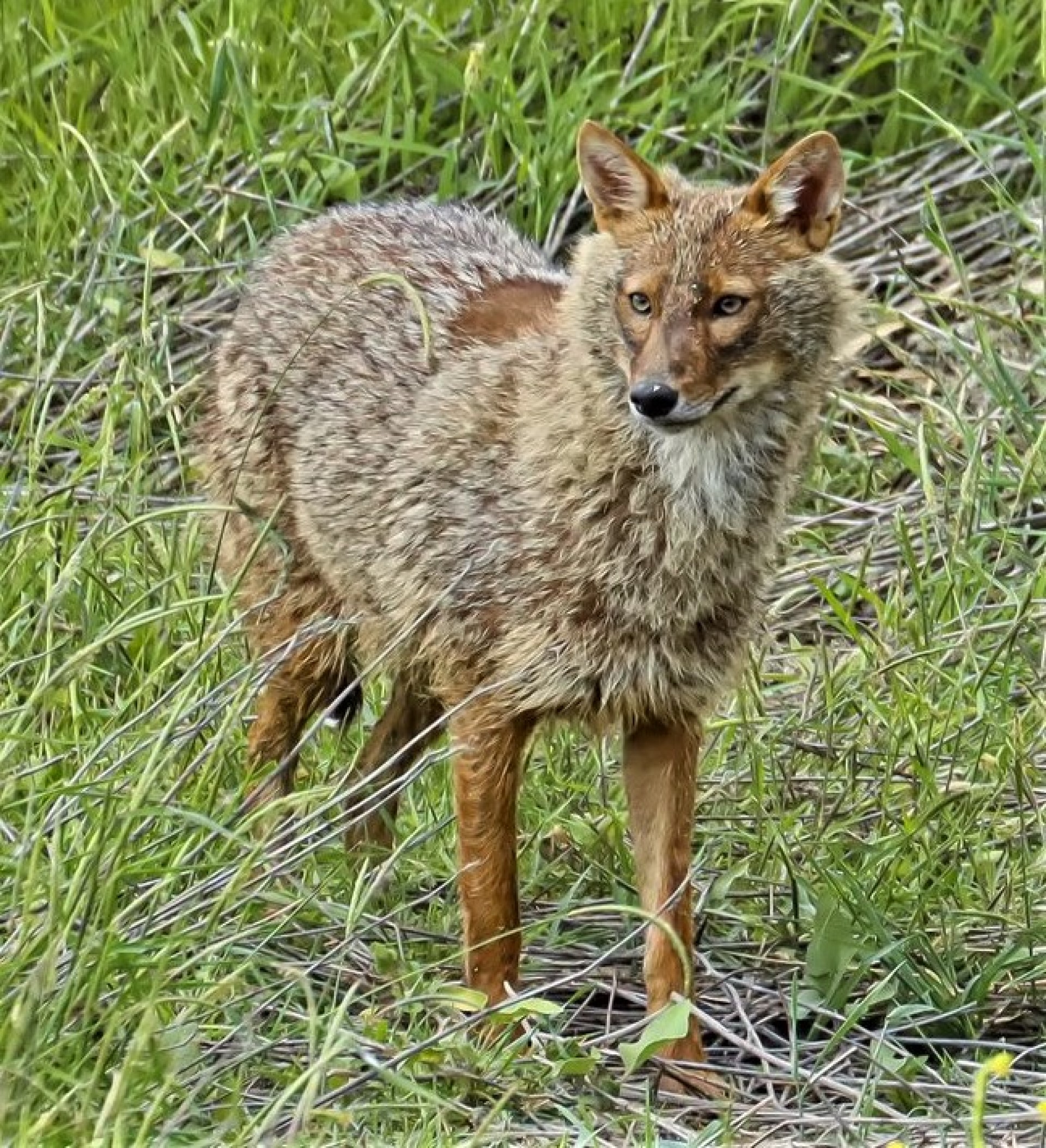
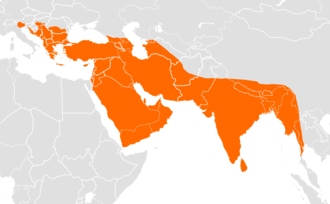


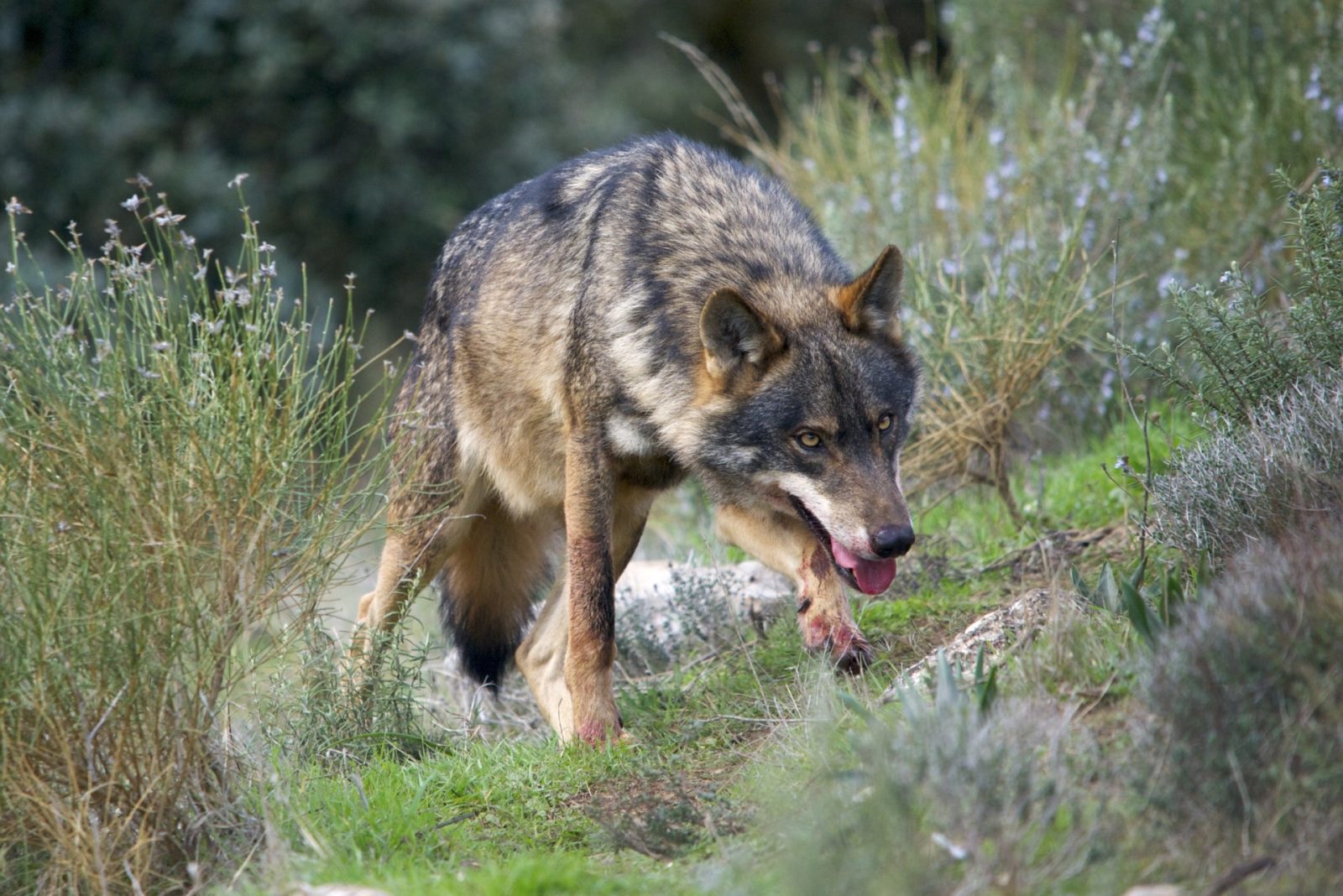

 The Iberian wolf is a subspecies of the grey wolf found on the Iberian peninsular. It reached its minimum in the 1970s with 500-700 iindividuals living in the wild. Until the middle of the 19th century, it was widespread, throughout the Iberian peninsular. It should be noted, that wolves have never had high densities, and the wolves of western Europe are not thought to have ever had a population much above 848–26 774 (depending on which end of the estimate you rely – but is the founding population of both the Iberian and Apennine population).
The Iberian wolf is a subspecies of the grey wolf found on the Iberian peninsular. It reached its minimum in the 1970s with 500-700 iindividuals living in the wild. Until the middle of the 19th century, it was widespread, throughout the Iberian peninsular. It should be noted, that wolves have never had high densities, and the wolves of western Europe are not thought to have ever had a population much above 848–26 774 (depending on which end of the estimate you rely – but is the founding population of both the Iberian and Apennine population).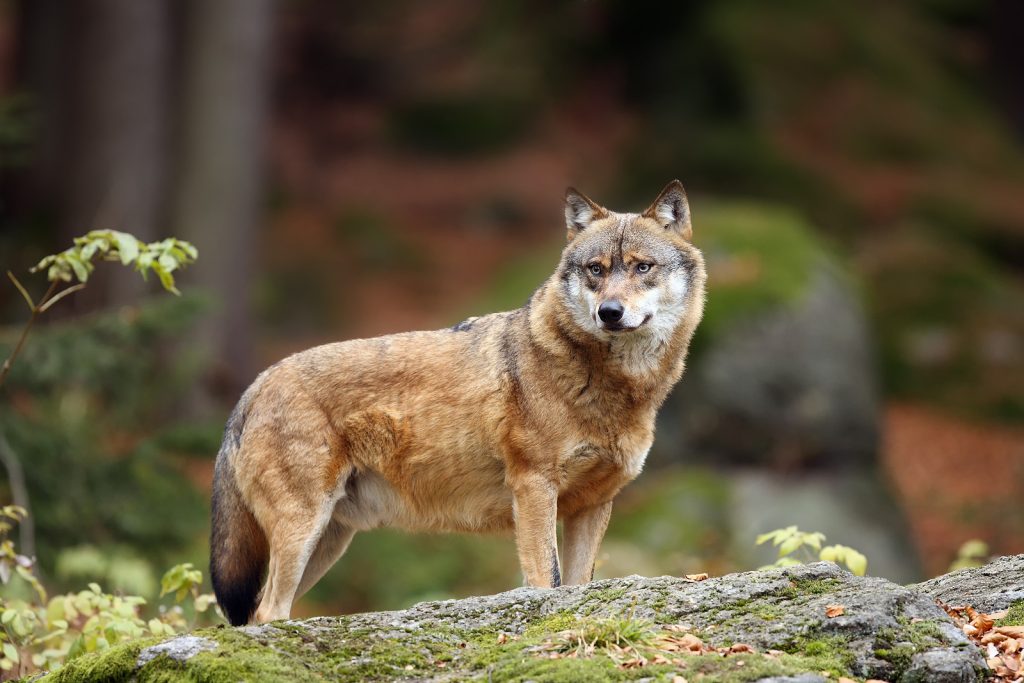


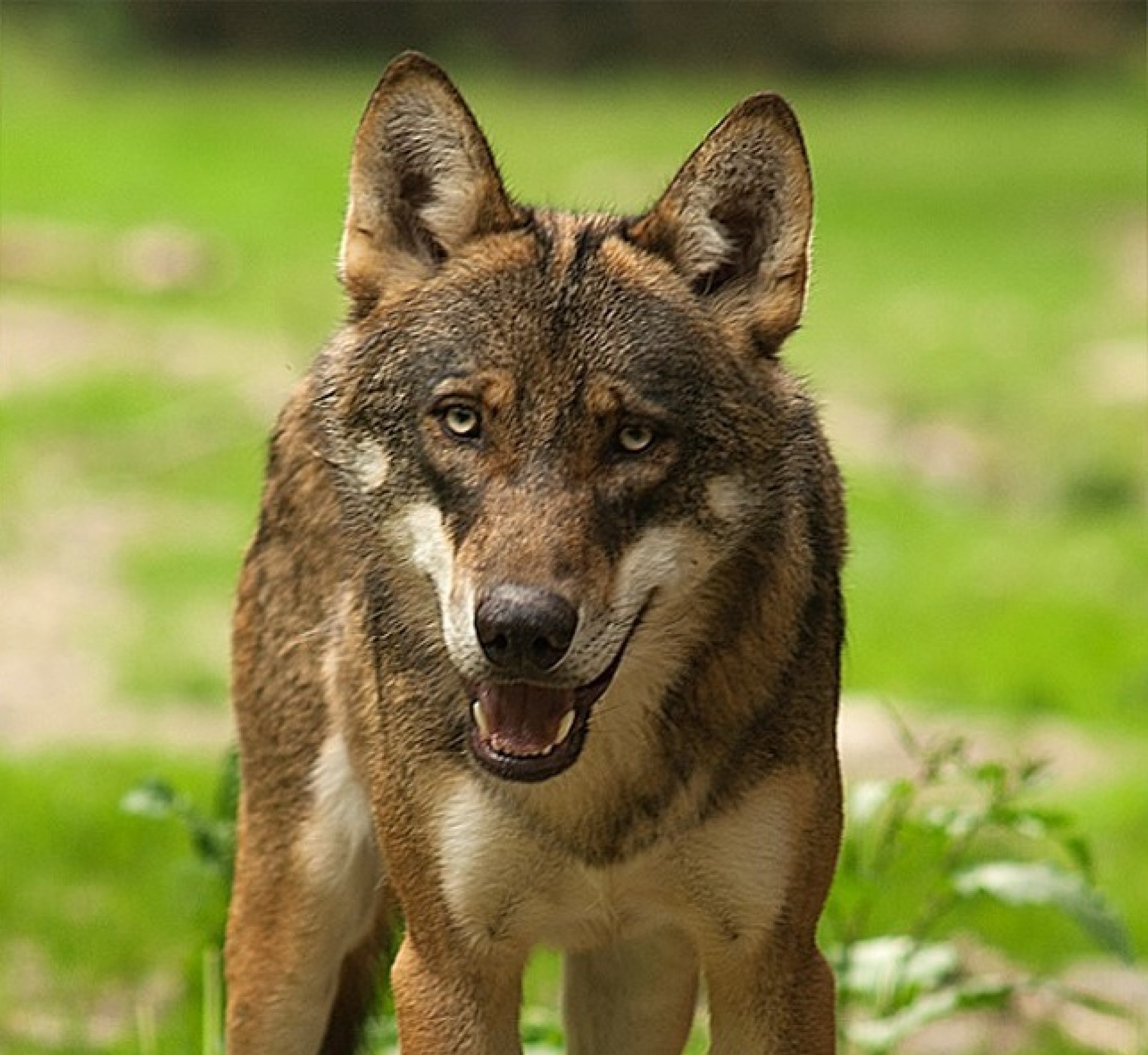
 The Apennine wolf is also known as the Italian wolf. Back in the 1970s the population reached its minimum, where the population reached 70-100 individuals. It has recovered well since then, with an Italian population of roughly 3300. However, since the early 1990s, this subspecies has been gradually moving into France. As such, at the end of 2022 the number was estimated at 1104 wolves in France.
The Apennine wolf is also known as the Italian wolf. Back in the 1970s the population reached its minimum, where the population reached 70-100 individuals. It has recovered well since then, with an Italian population of roughly 3300. However, since the early 1990s, this subspecies has been gradually moving into France. As such, at the end of 2022 the number was estimated at 1104 wolves in France.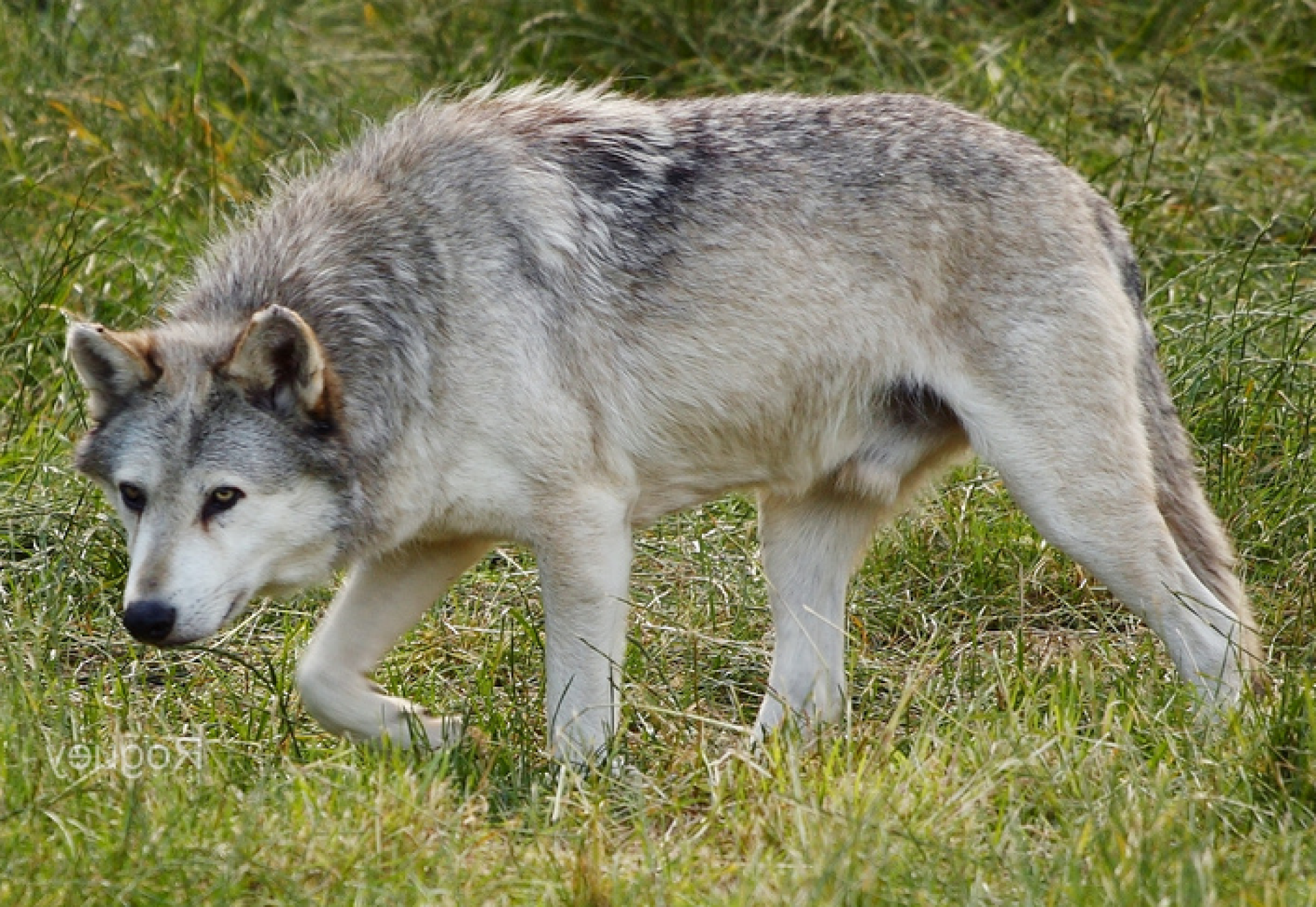
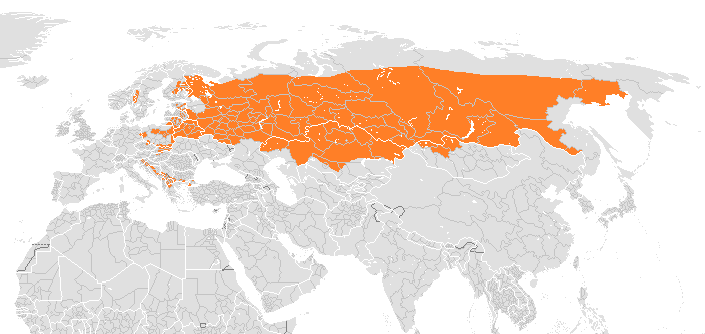 The Eurasian wolf (often referred to as the Russian wolf), is the subspecies which runs down the east coast of the Adriatic sea, as well as the majority of Russia and northern Europe.
The Eurasian wolf (often referred to as the Russian wolf), is the subspecies which runs down the east coast of the Adriatic sea, as well as the majority of Russia and northern Europe. 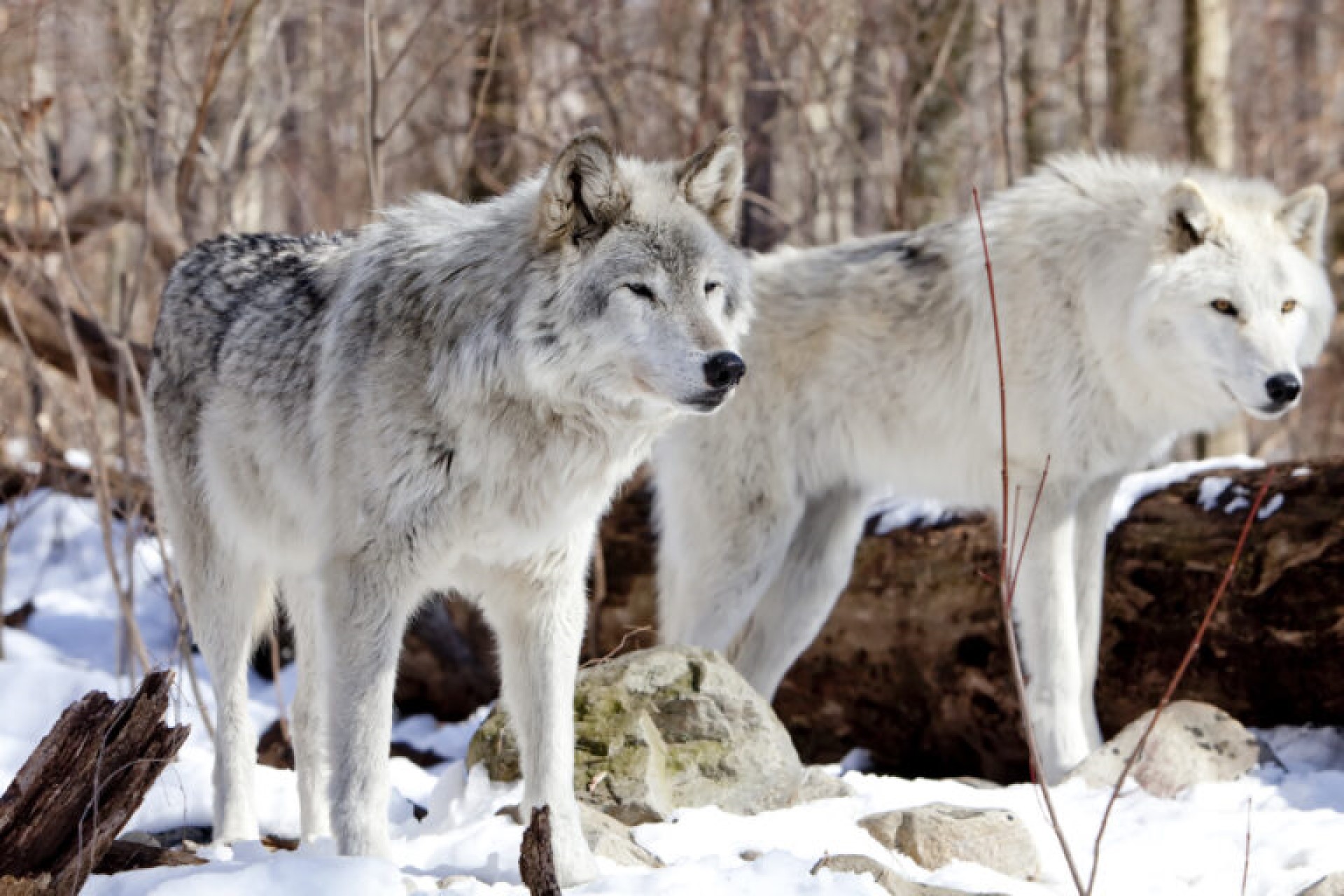
 The Tundra wolf – Canis lupus Albus is the Eurasian equivalent of the Arctic wolf. Also known as the Turukhan wolf, it is native to Eurasia’s tundra and forest-tundra zones from Finland to the Kamchatka Peninsula. It was first described in 1792 by Robert Kerr.
The Tundra wolf – Canis lupus Albus is the Eurasian equivalent of the Arctic wolf. Also known as the Turukhan wolf, it is native to Eurasia’s tundra and forest-tundra zones from Finland to the Kamchatka Peninsula. It was first described in 1792 by Robert Kerr.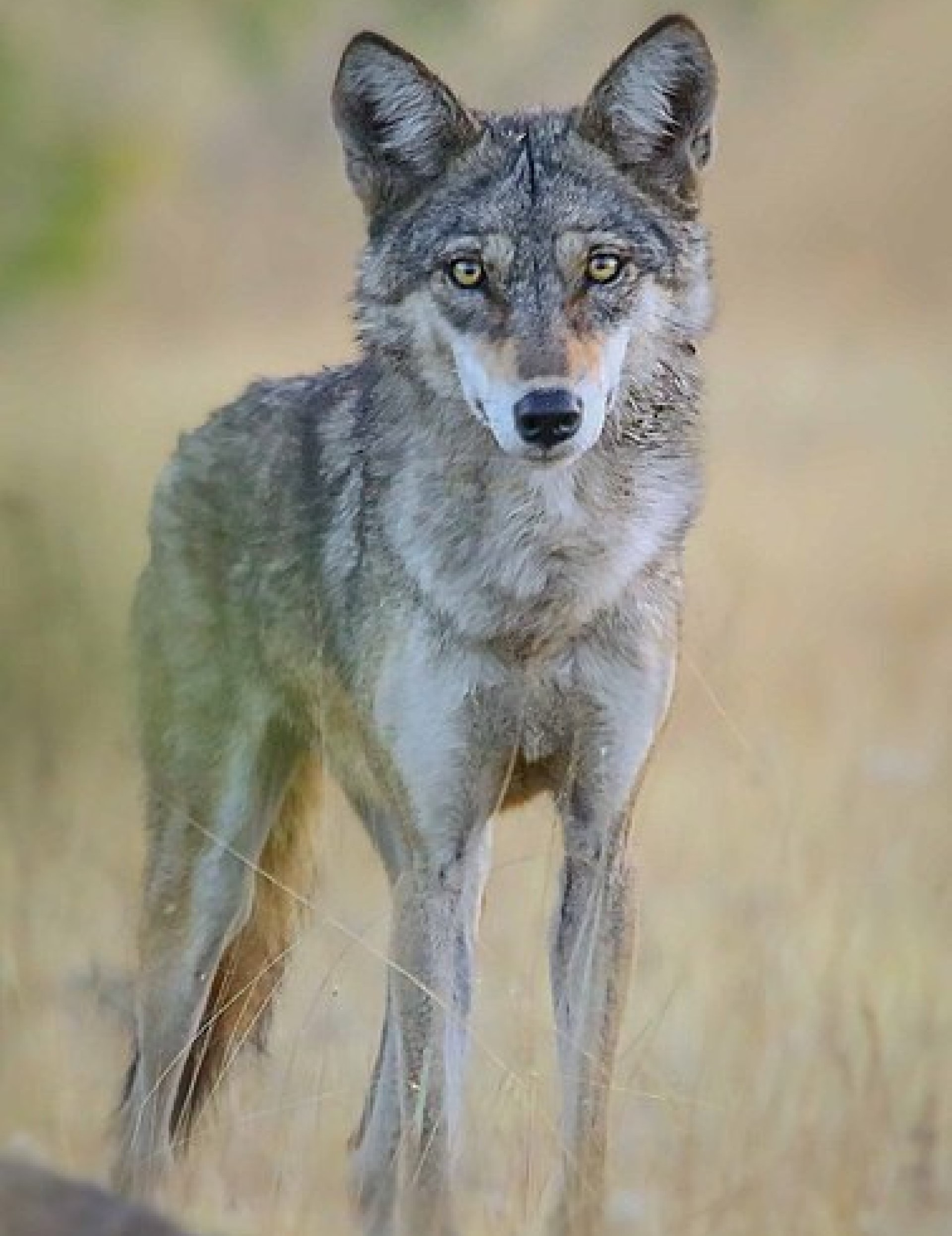
 The Indian wolf is one of the more well known, partly as their starring role in the Jungle book by Rudyard Kipling. I do remember my great grandmother talking about seeing 4 wolves running in the distance. It is thought to have 2000-3000 individuals left in the wild, though given its former large range, this does not appear very high. It should not be surprising, therefore, to hear that this is considered as one of the most endangered subspecies of the grey wolf – it officially has the conservation status of endangered – now it is considered endangered, and people talk about it at high risk, but it should be remembered that there are still 2000-3000, which is a pretty high number for a species considered more than just endangered.
The Indian wolf is one of the more well known, partly as their starring role in the Jungle book by Rudyard Kipling. I do remember my great grandmother talking about seeing 4 wolves running in the distance. It is thought to have 2000-3000 individuals left in the wild, though given its former large range, this does not appear very high. It should not be surprising, therefore, to hear that this is considered as one of the most endangered subspecies of the grey wolf – it officially has the conservation status of endangered – now it is considered endangered, and people talk about it at high risk, but it should be remembered that there are still 2000-3000, which is a pretty high number for a species considered more than just endangered.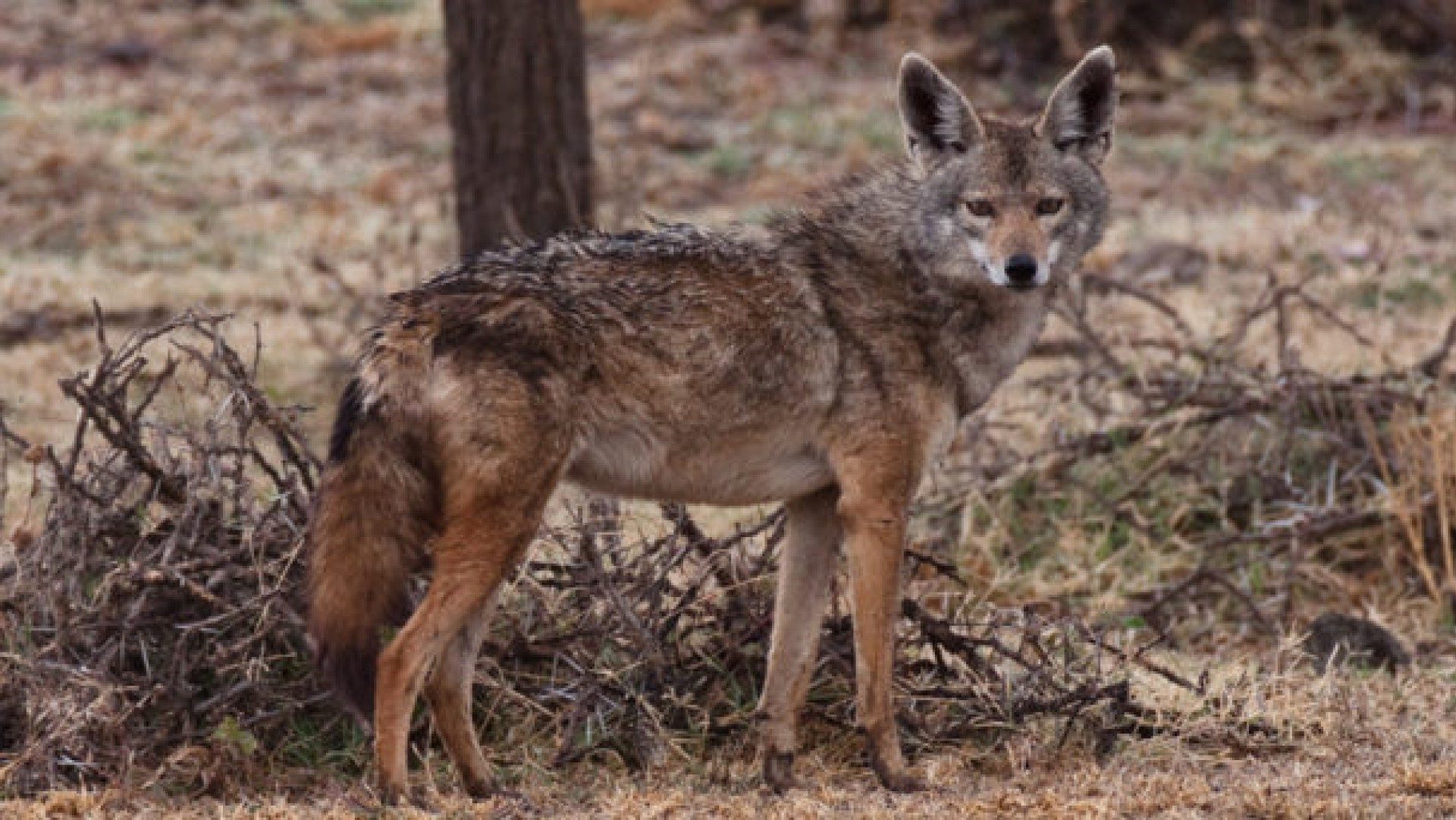
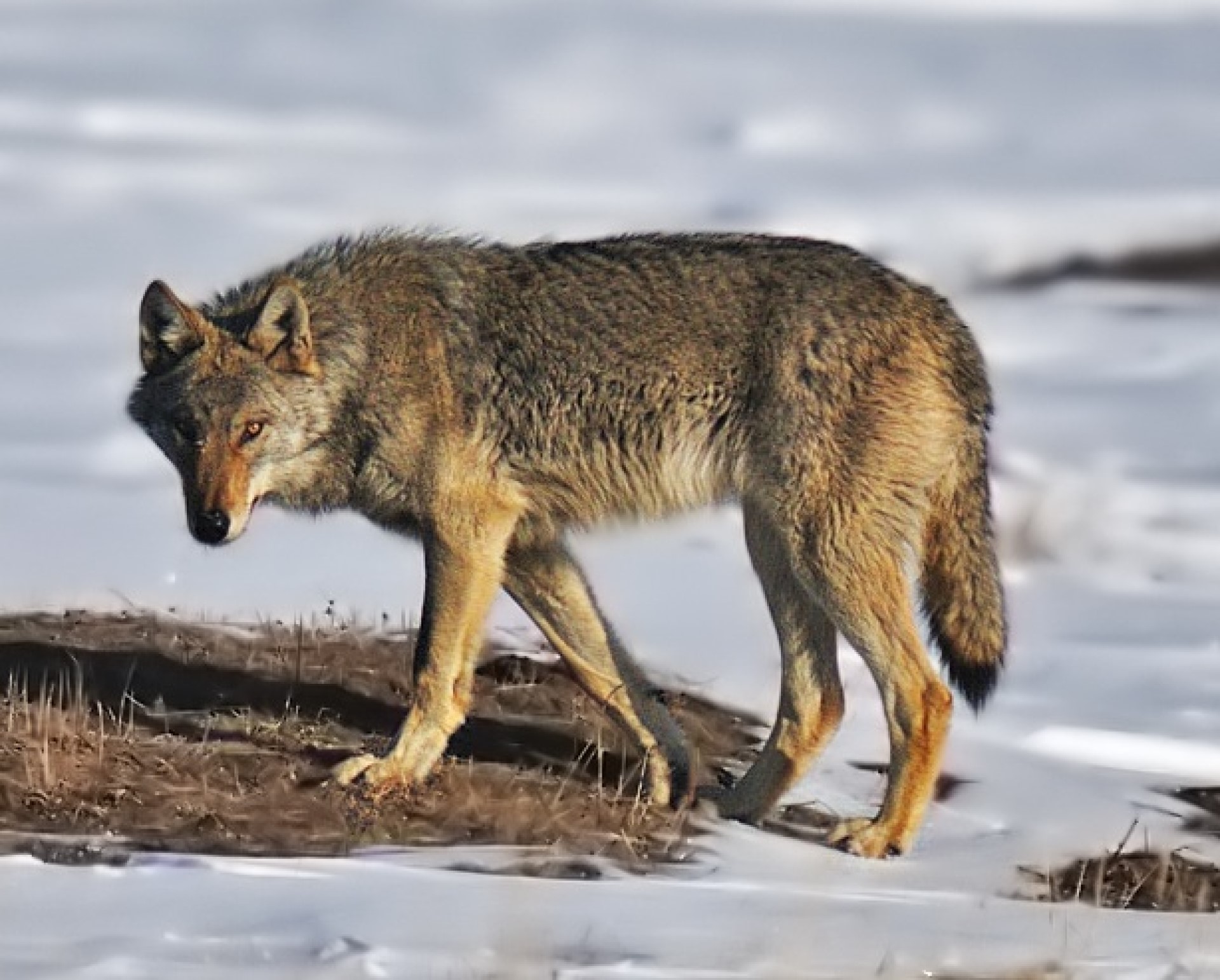
 The Steppe wolf also known as the Caspian sea wolf is a wolf subspecies that is found in the region around the Caspian sea, though the Steppe wolf is perhaps more useful a name as it extends far from the Caspian sea. Much of its range is in Kazakhstan as the working figure is 30,000 individuals, however, the survey which produced this number was completed in 2007, and given the lack of any protection and the widespread enjoyment, got from hunting wolves, it seems highly unlikely that the current population is anywhere near that size.
The Steppe wolf also known as the Caspian sea wolf is a wolf subspecies that is found in the region around the Caspian sea, though the Steppe wolf is perhaps more useful a name as it extends far from the Caspian sea. Much of its range is in Kazakhstan as the working figure is 30,000 individuals, however, the survey which produced this number was completed in 2007, and given the lack of any protection and the widespread enjoyment, got from hunting wolves, it seems highly unlikely that the current population is anywhere near that size. 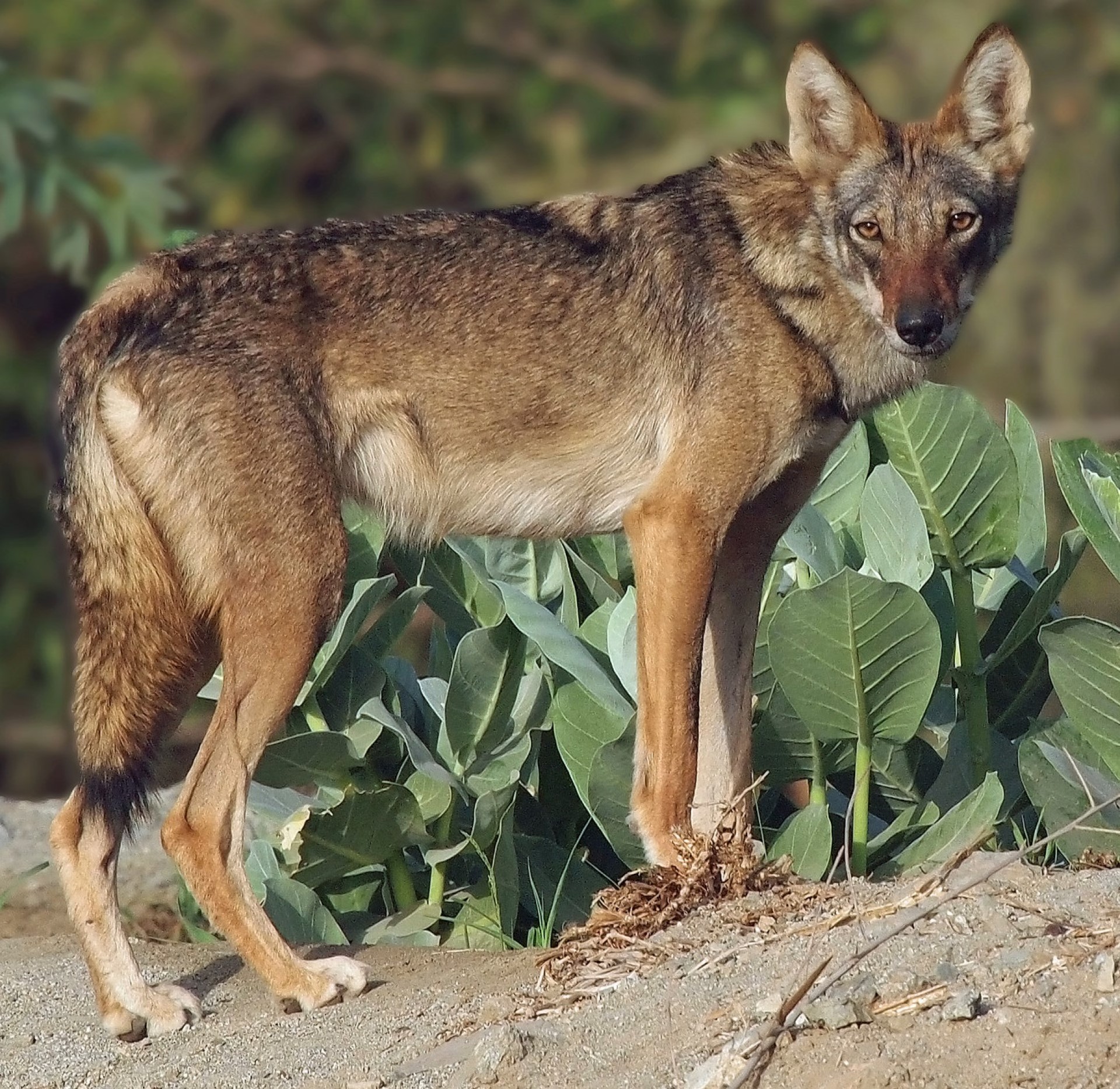
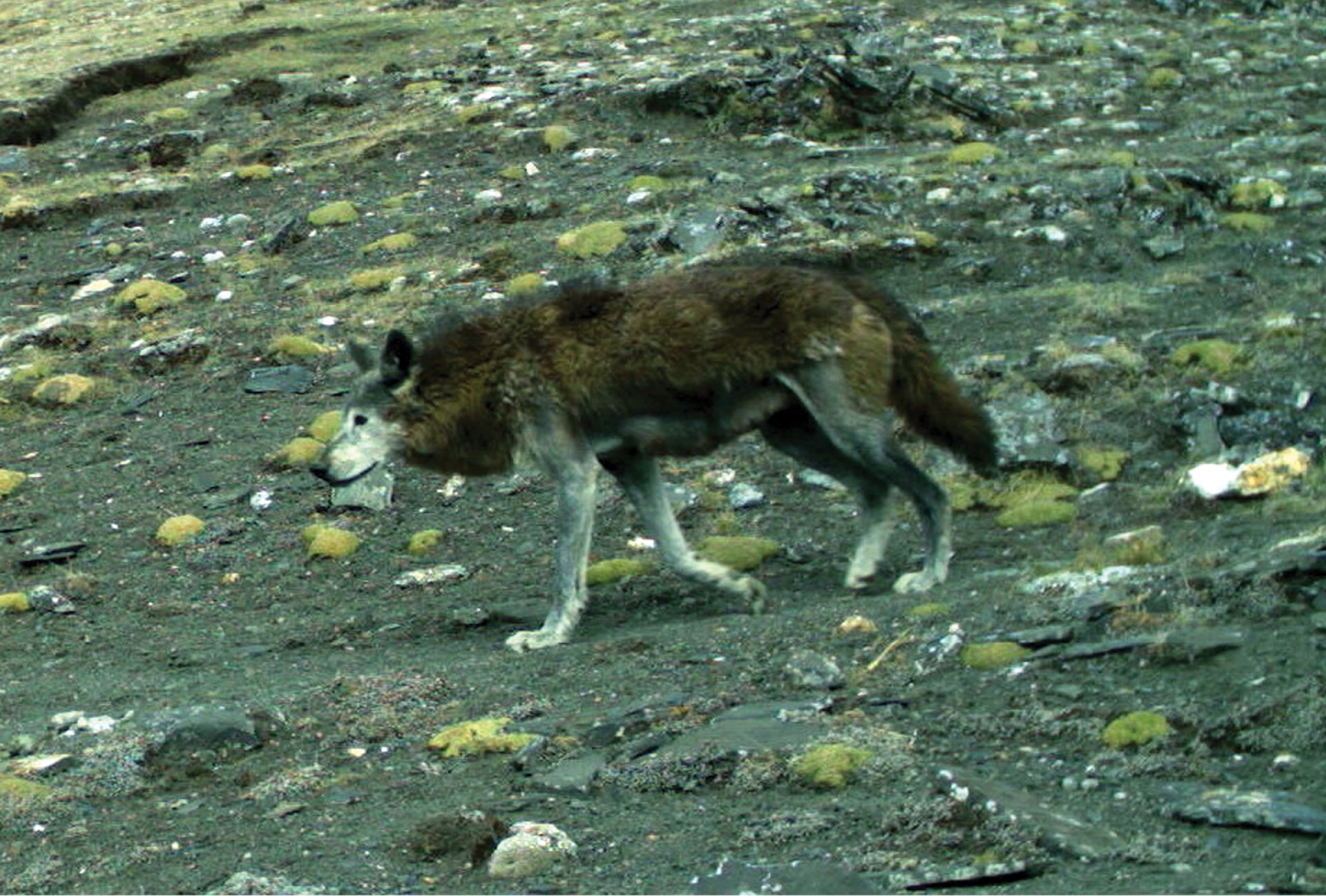

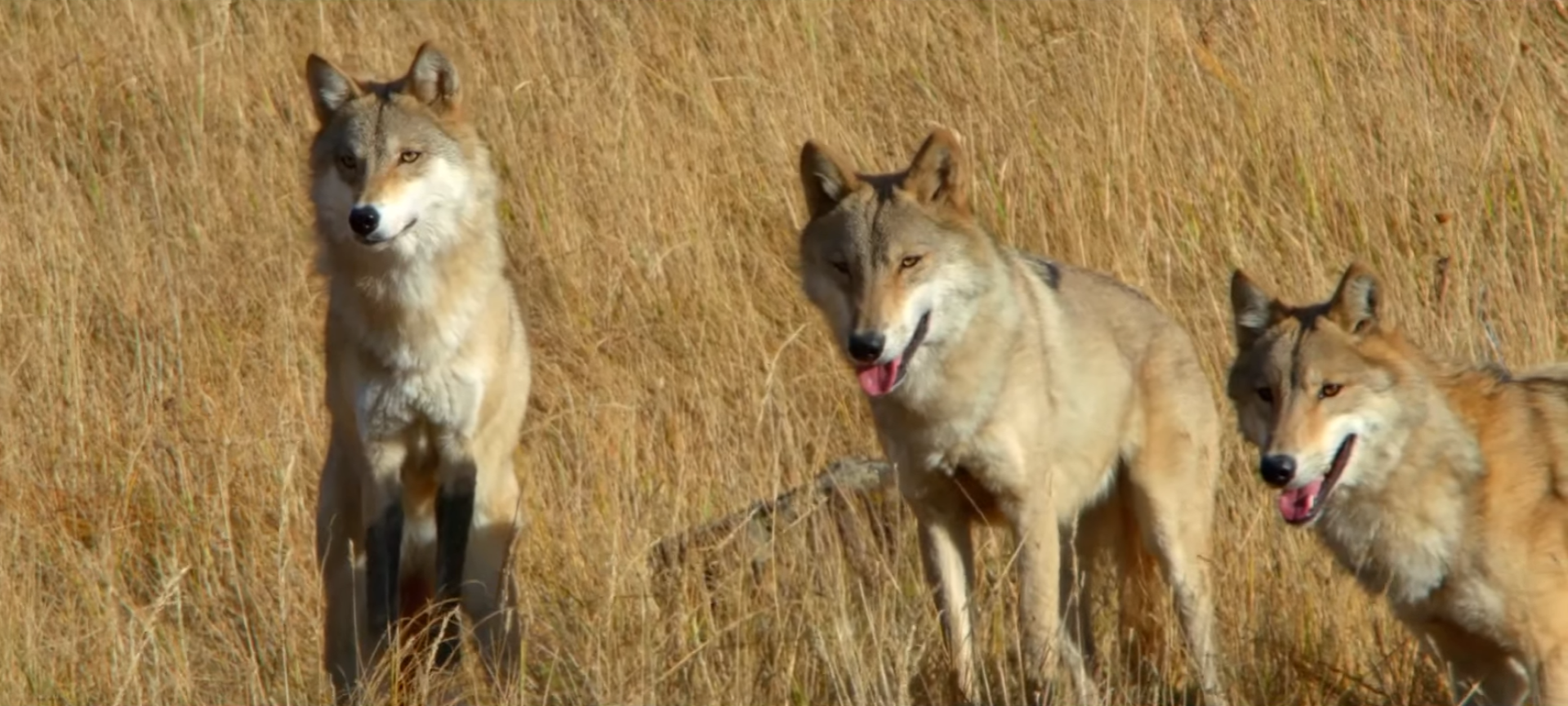

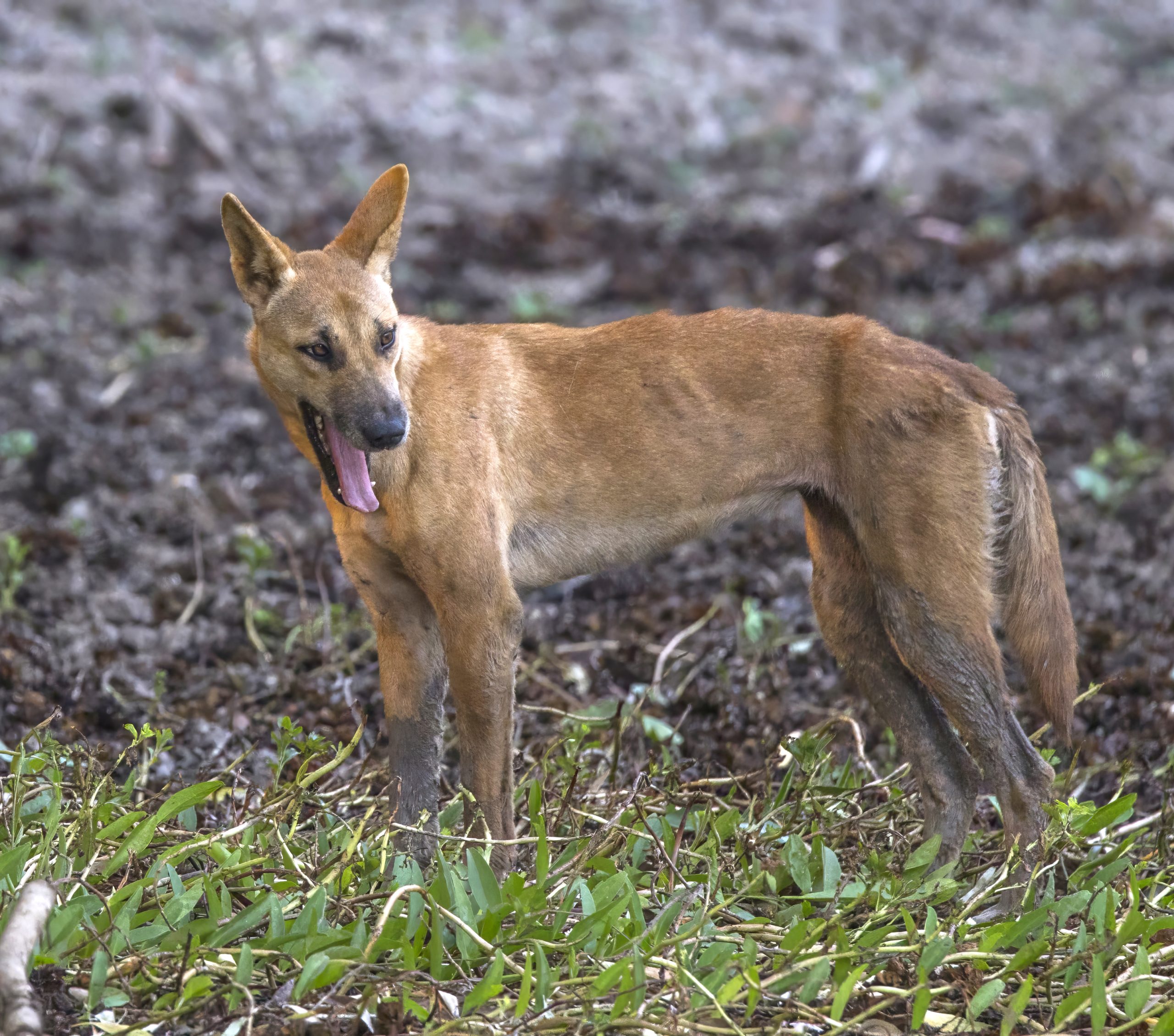
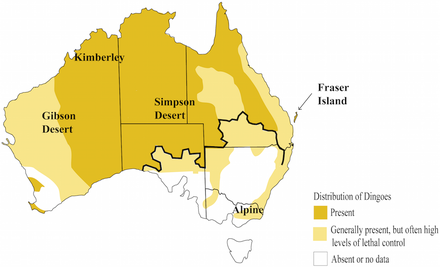 Closely related to the new Guinea singing dog, the Dingo is a dog species that has a relatively wide range. There is some debate about how it got to some of its homes, and whether it may have come alongside early humans.
Closely related to the new Guinea singing dog, the Dingo is a dog species that has a relatively wide range. There is some debate about how it got to some of its homes, and whether it may have come alongside early humans.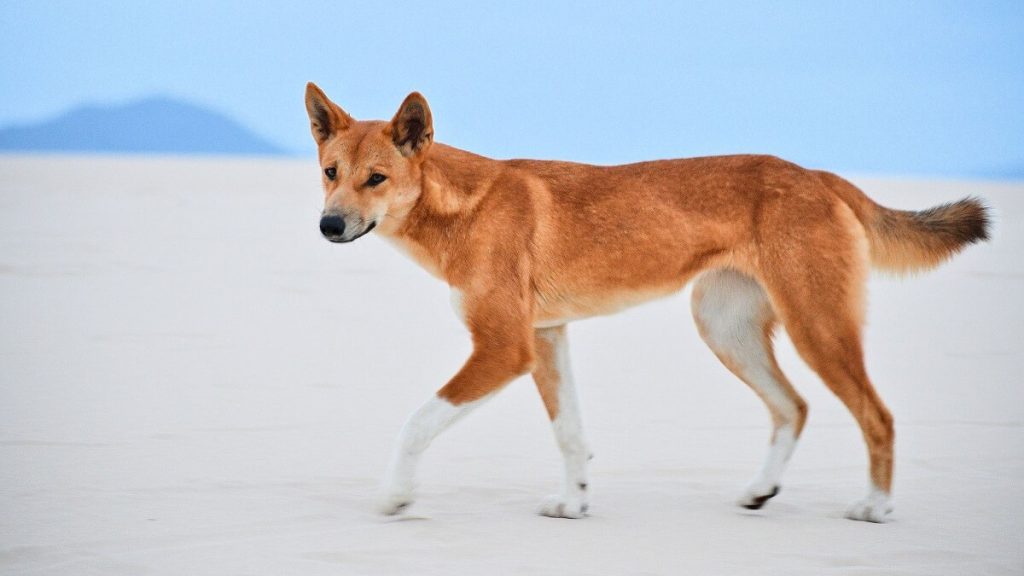

 New world wolf subspecies- until recently, as many as 38 wolf subspecies were recognized in North America. The current agreement is that there is just 4-6 (it should be noted that while it has been a debate for over a century, the current agreement is that the red wolf is a separate species and not a subspecies of the grey wolf).
New world wolf subspecies- until recently, as many as 38 wolf subspecies were recognized in North America. The current agreement is that there is just 4-6 (it should be noted that while it has been a debate for over a century, the current agreement is that the red wolf is a separate species and not a subspecies of the grey wolf). 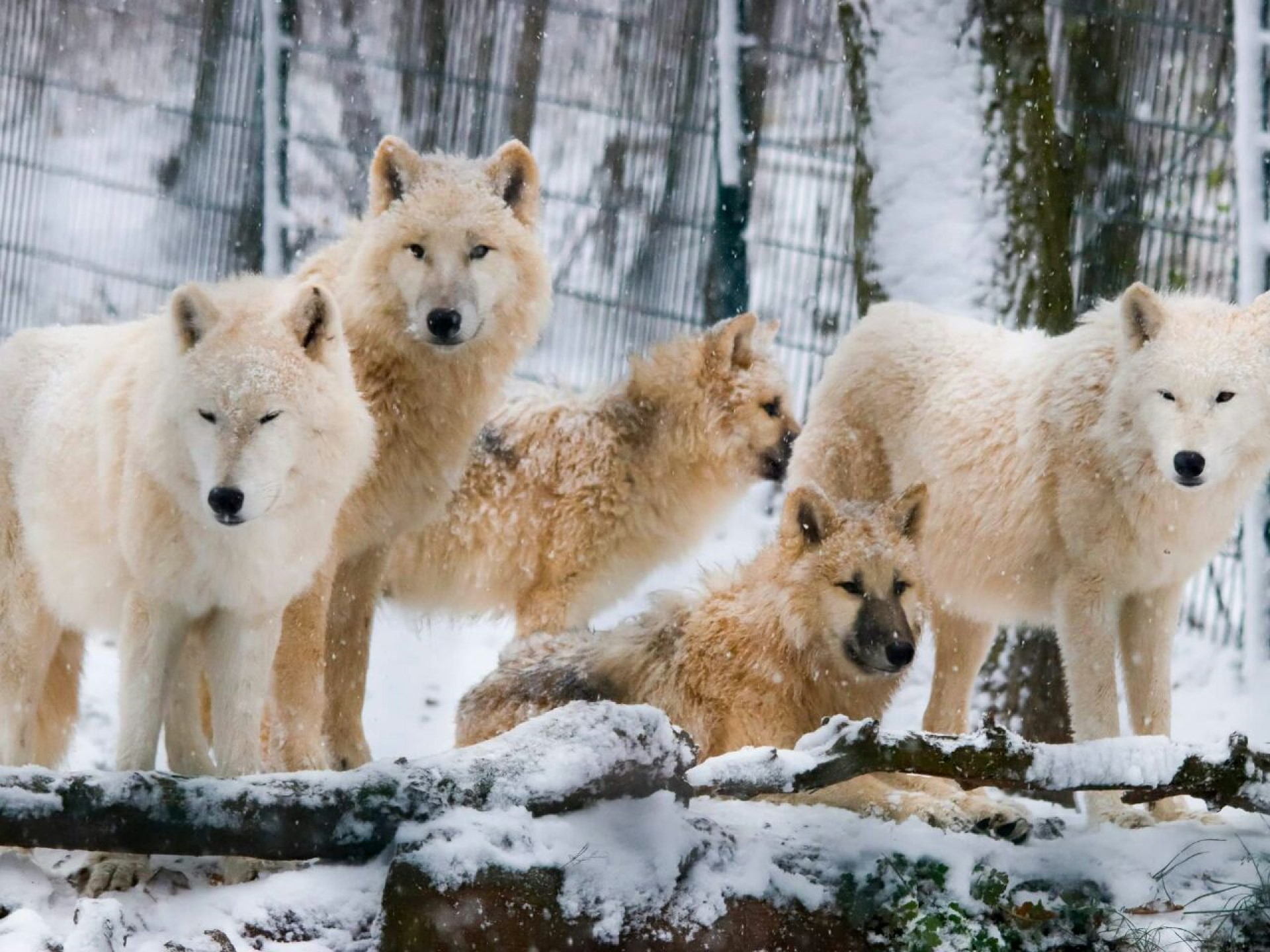
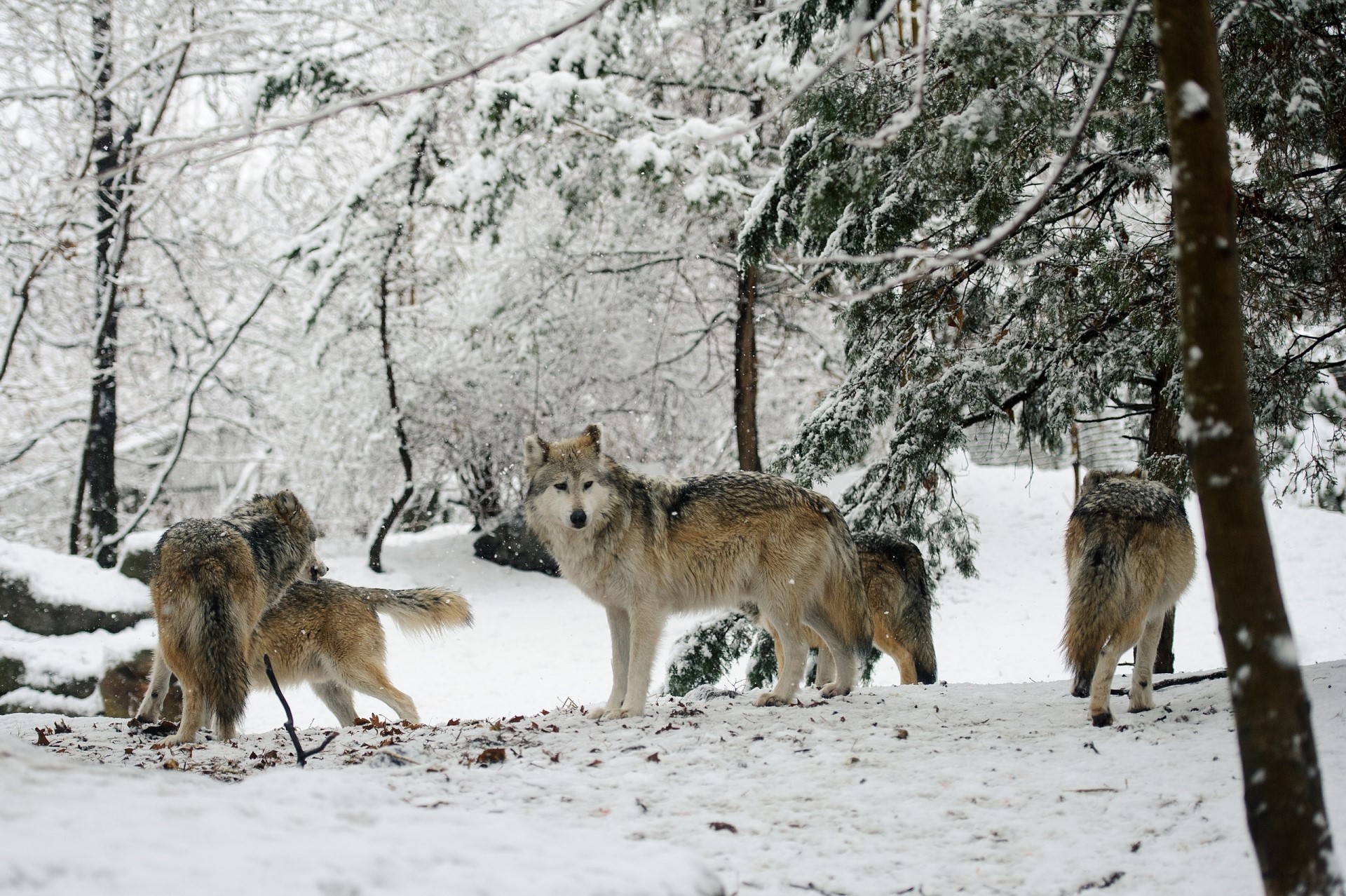
 Mexican wolves (scientific name is Canis lupus baileyi) are currently only found in a small area as seen on the map to the right. It is a fantastic improvement on the situation around 1970 when the species was extinct in the wild. The first reintroduction was carried out in 1998. Unfortunately, founded by just 7 individuals, the population is highly inbred. Never-the-less, currently, the USA has 257 wild Mexican wolves, while 57 live across the border in Mexico, up from just 11 that were reintroduced into the wild. A further 380 are in captivity.
Mexican wolves (scientific name is Canis lupus baileyi) are currently only found in a small area as seen on the map to the right. It is a fantastic improvement on the situation around 1970 when the species was extinct in the wild. The first reintroduction was carried out in 1998. Unfortunately, founded by just 7 individuals, the population is highly inbred. Never-the-less, currently, the USA has 257 wild Mexican wolves, while 57 live across the border in Mexico, up from just 11 that were reintroduced into the wild. A further 380 are in captivity. 